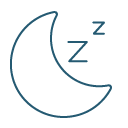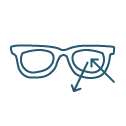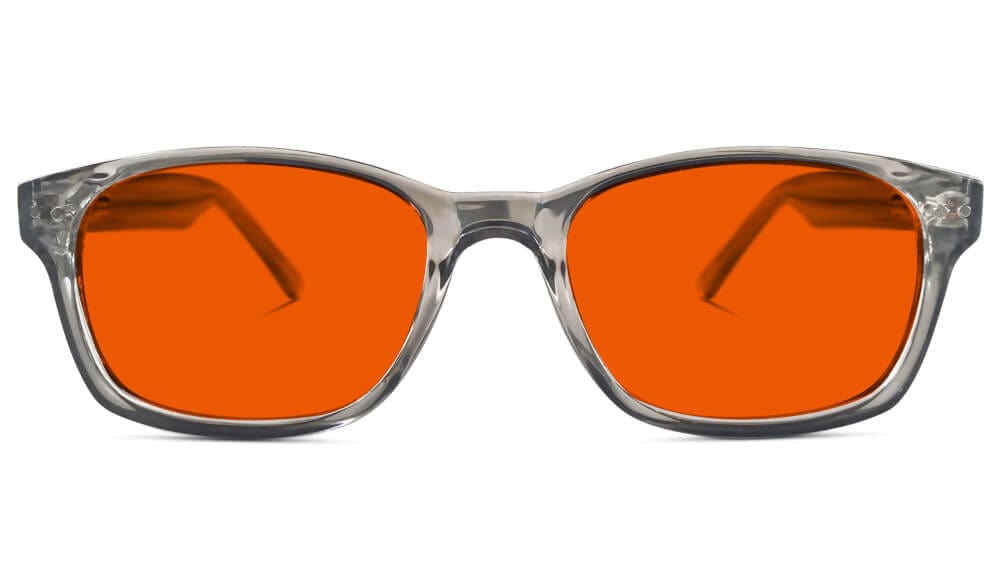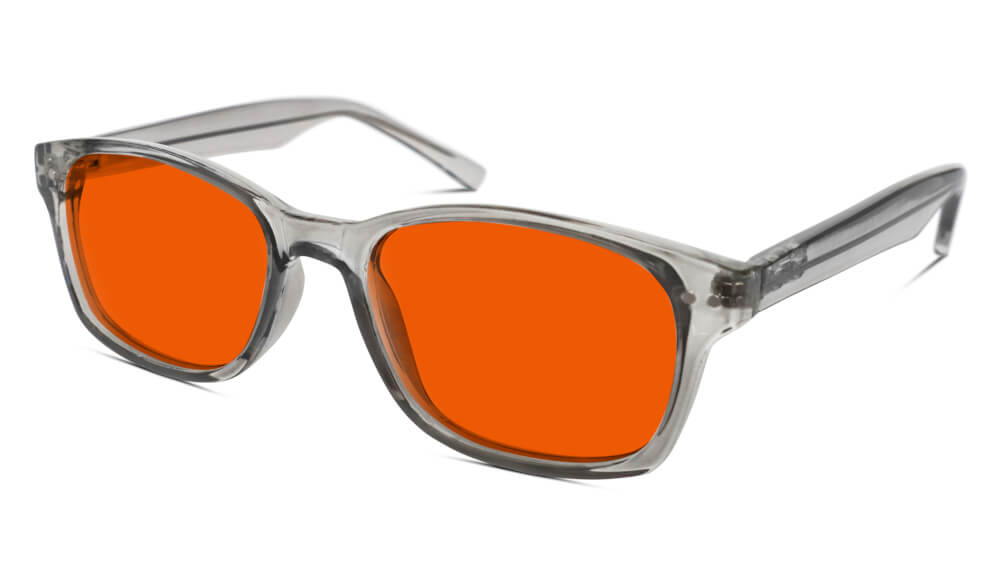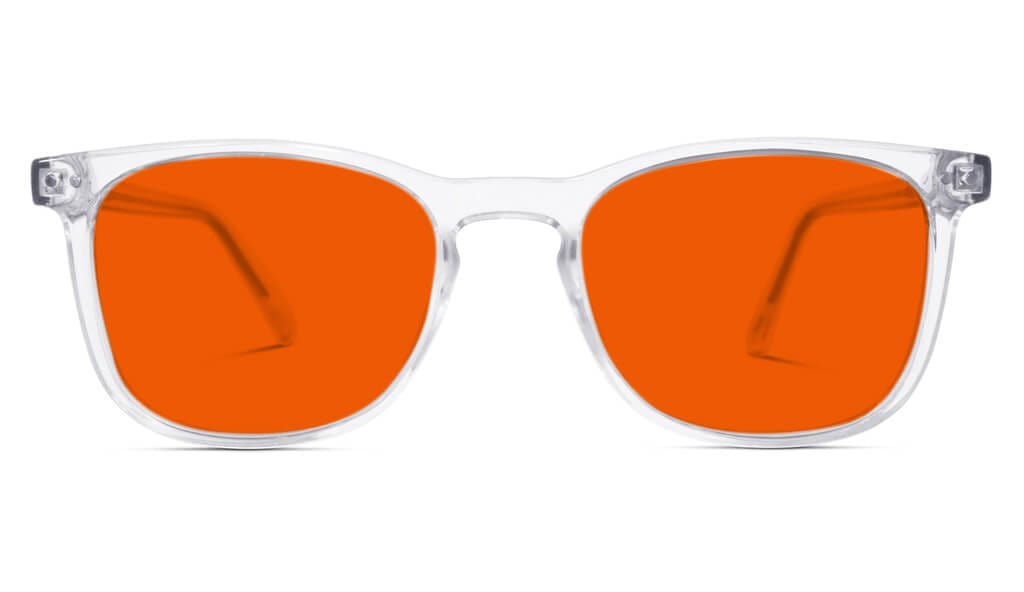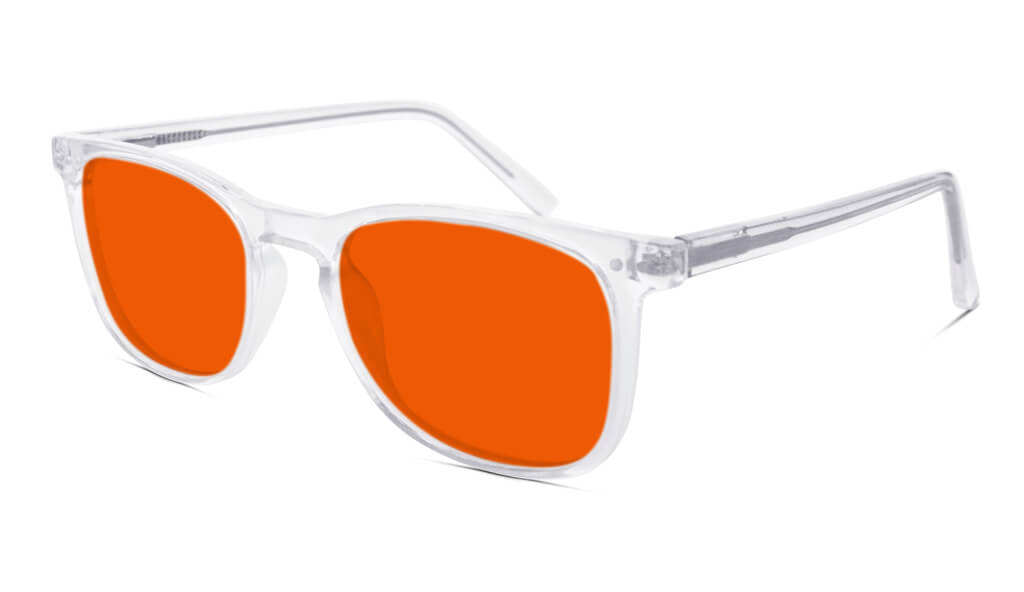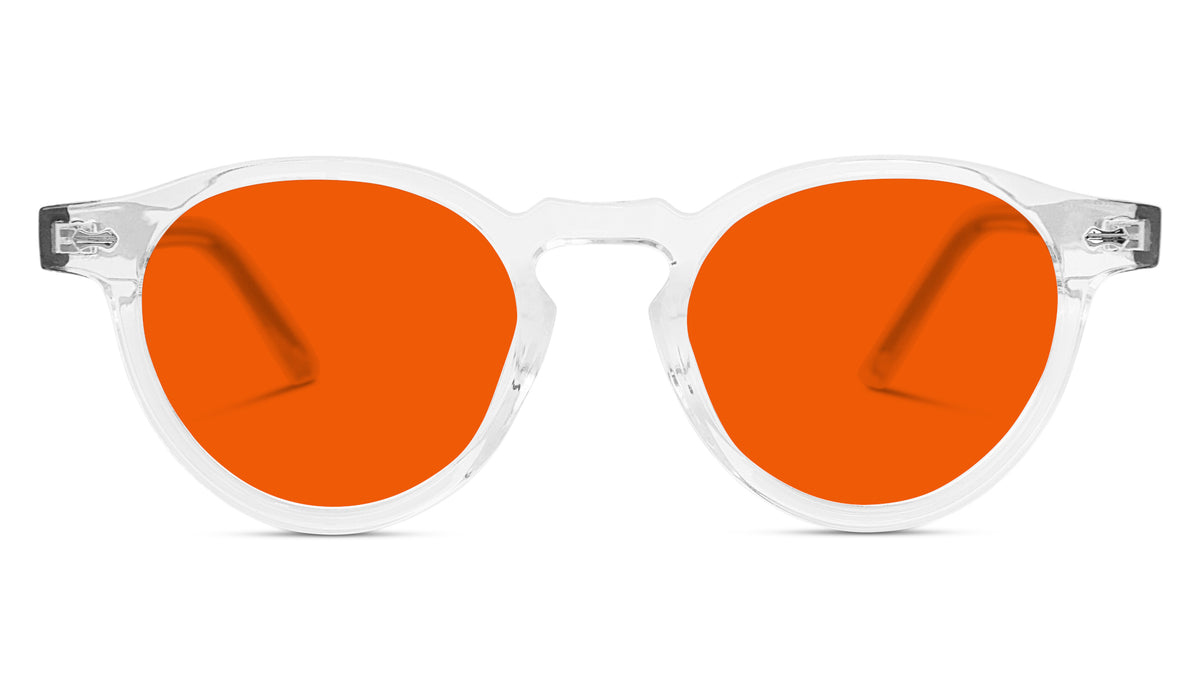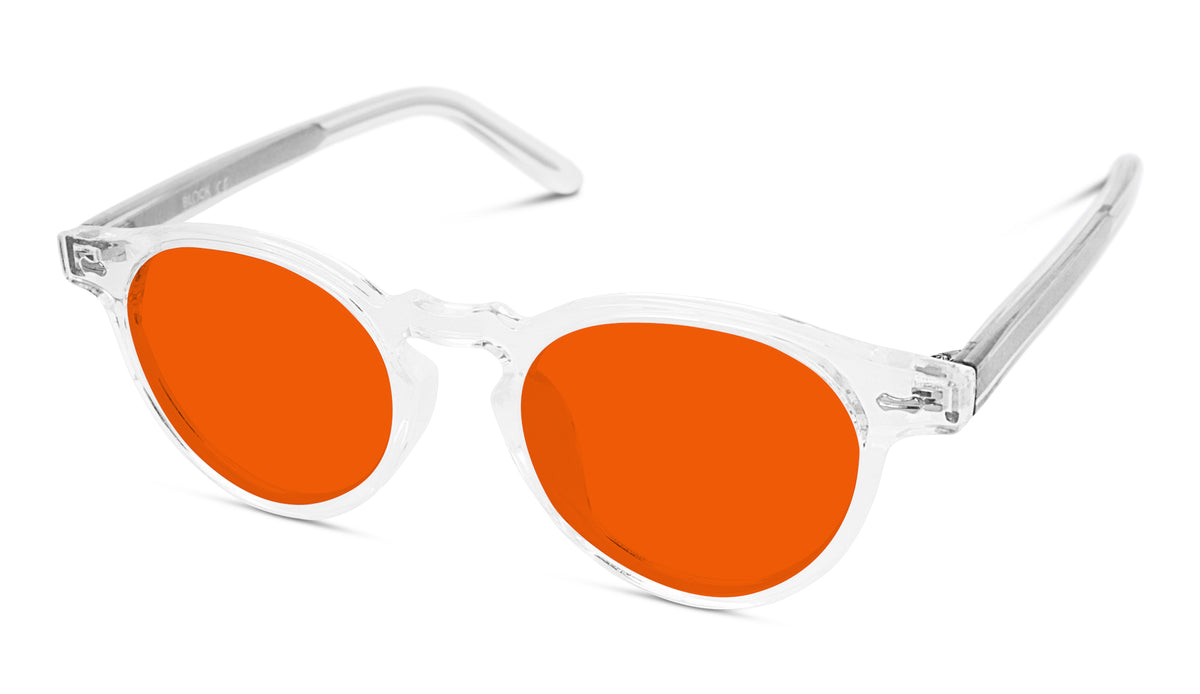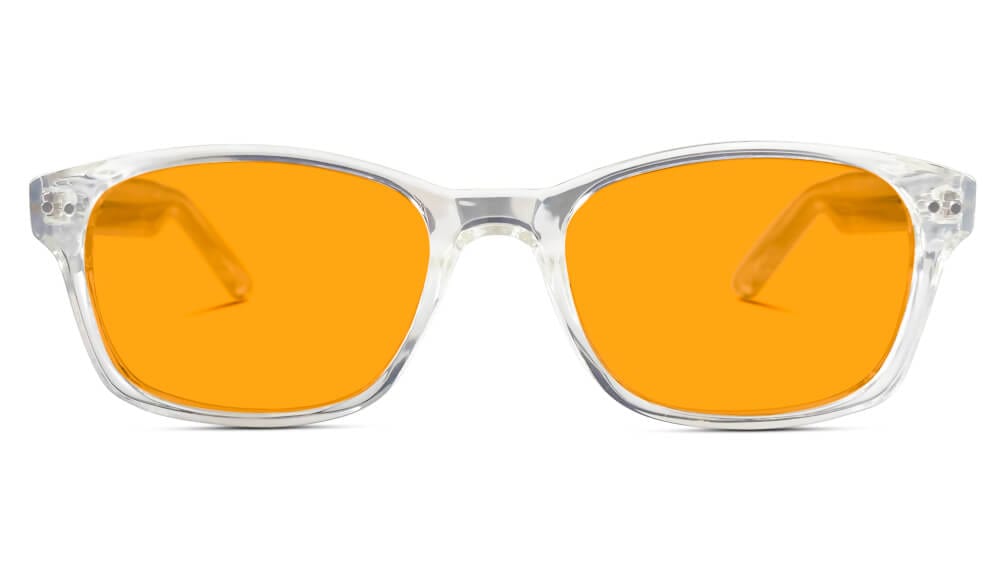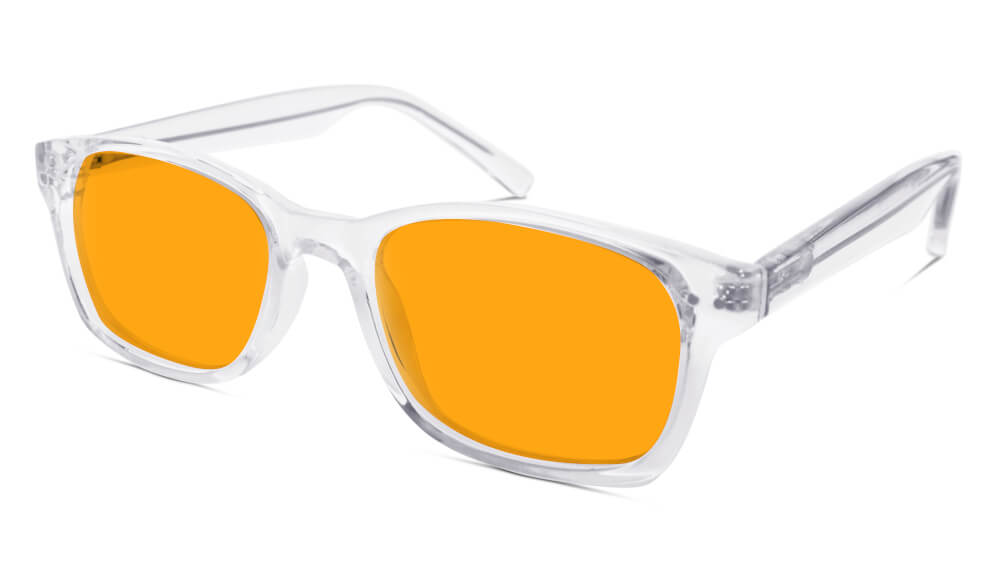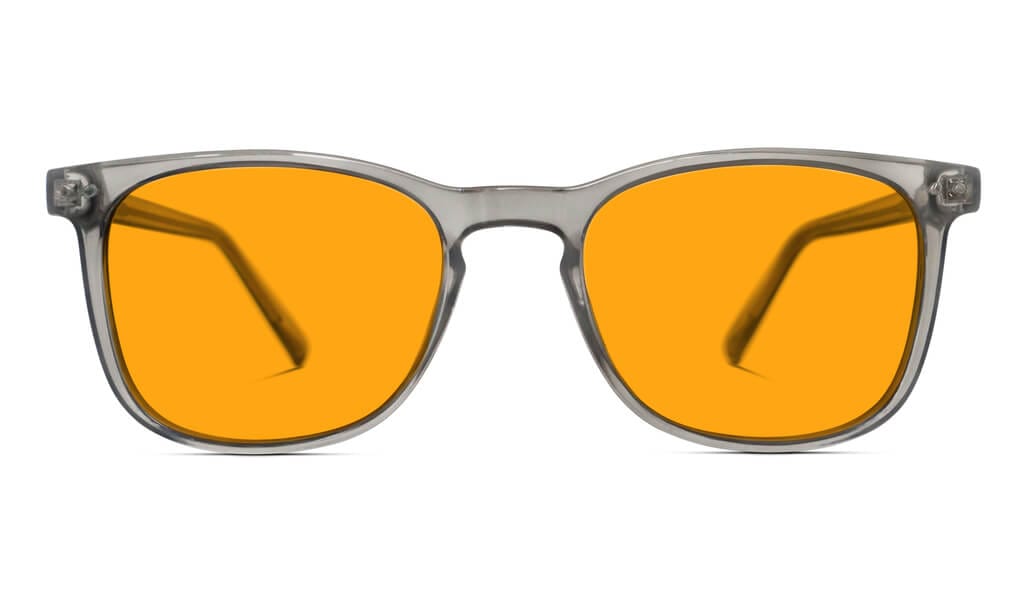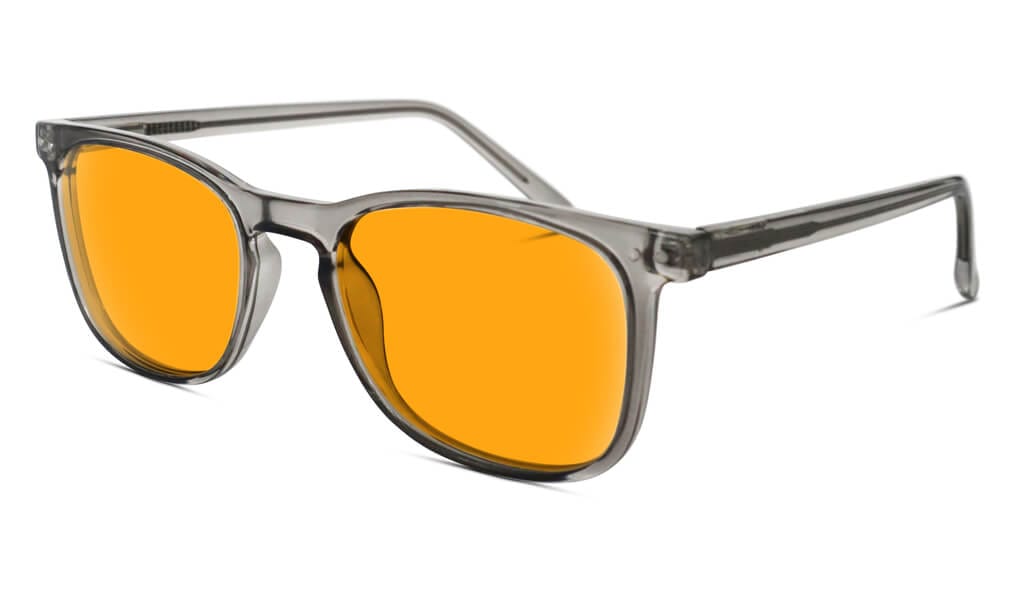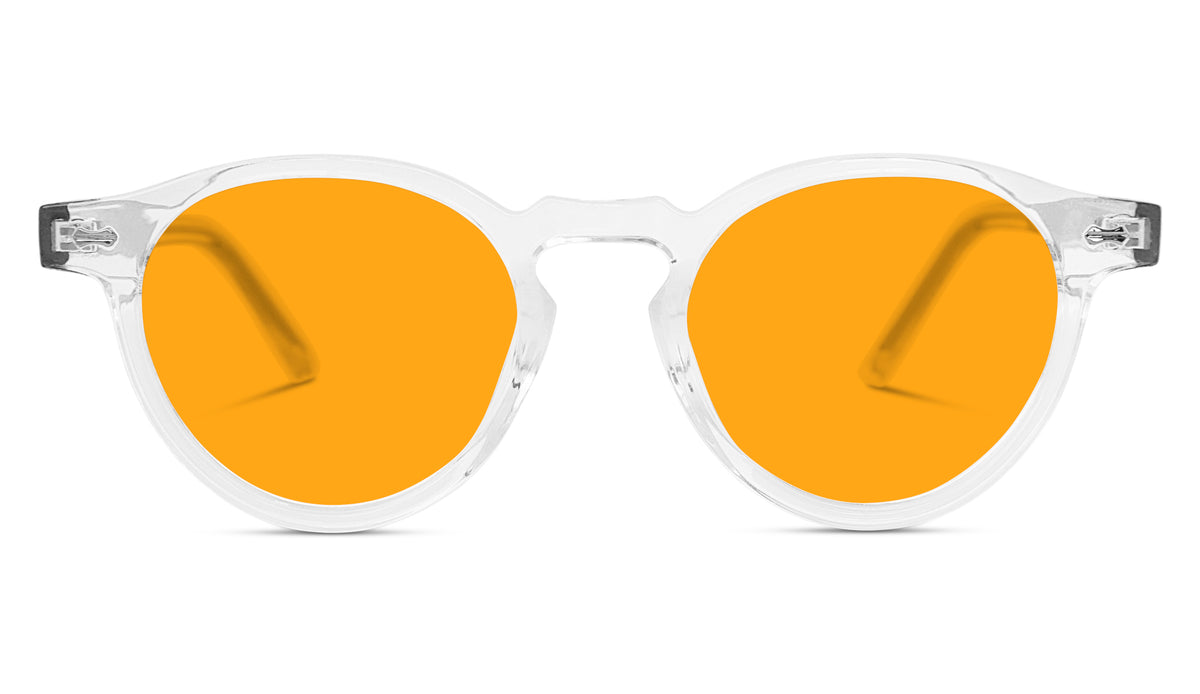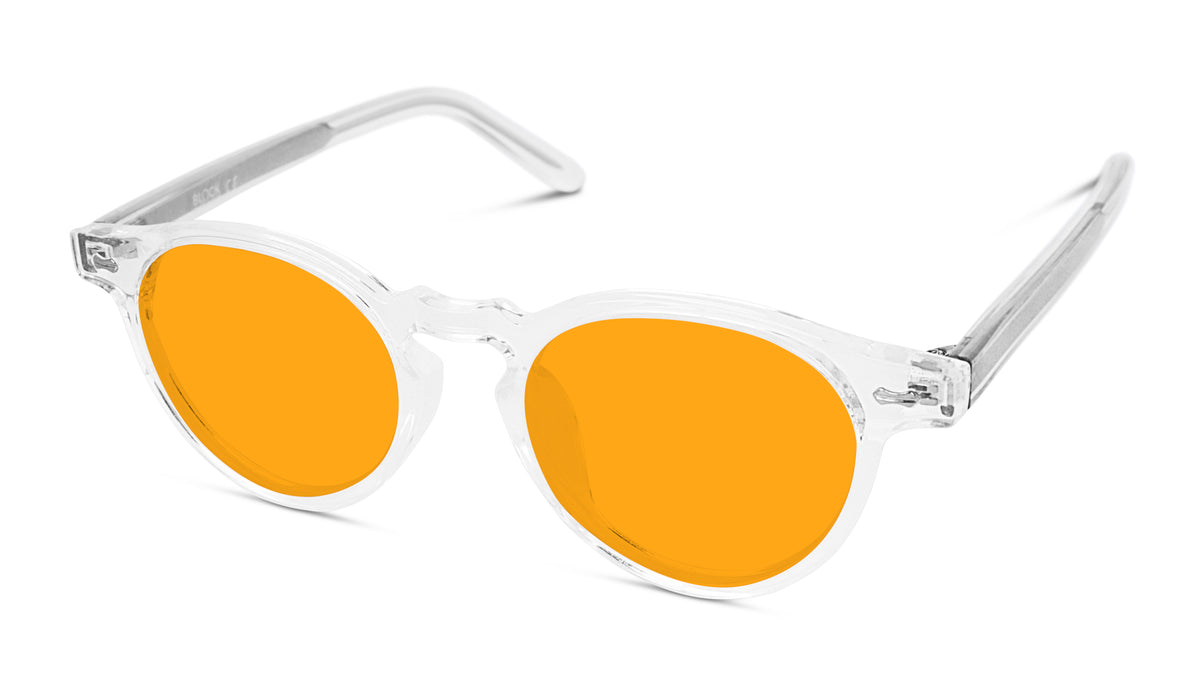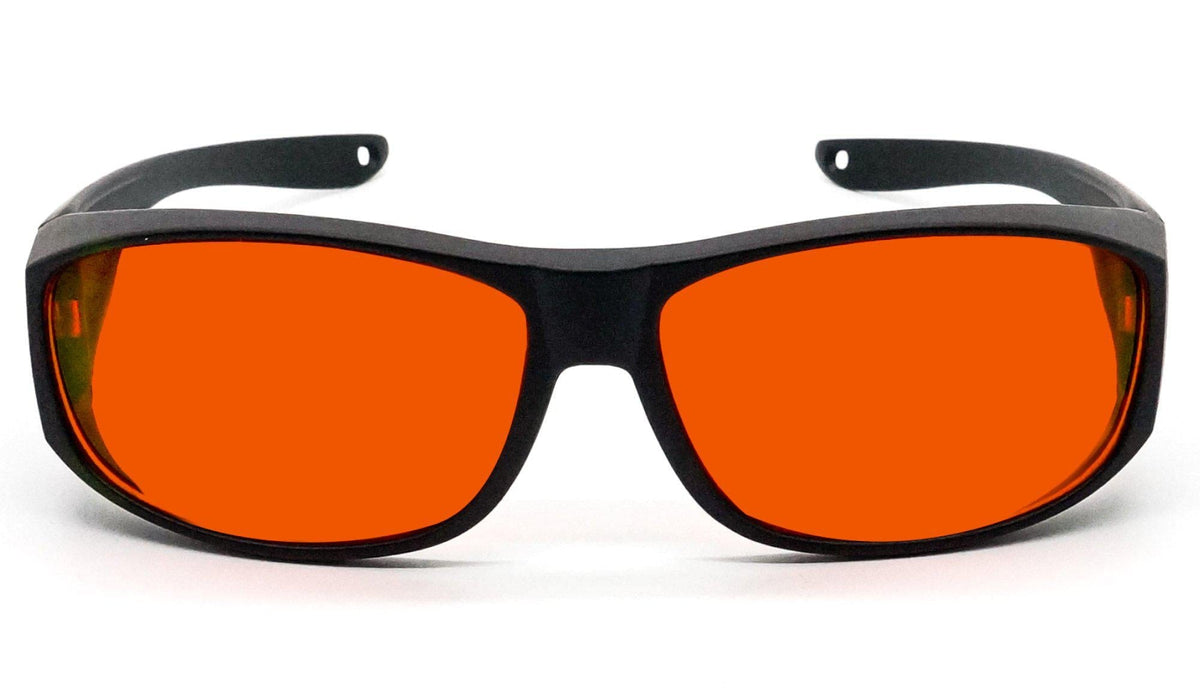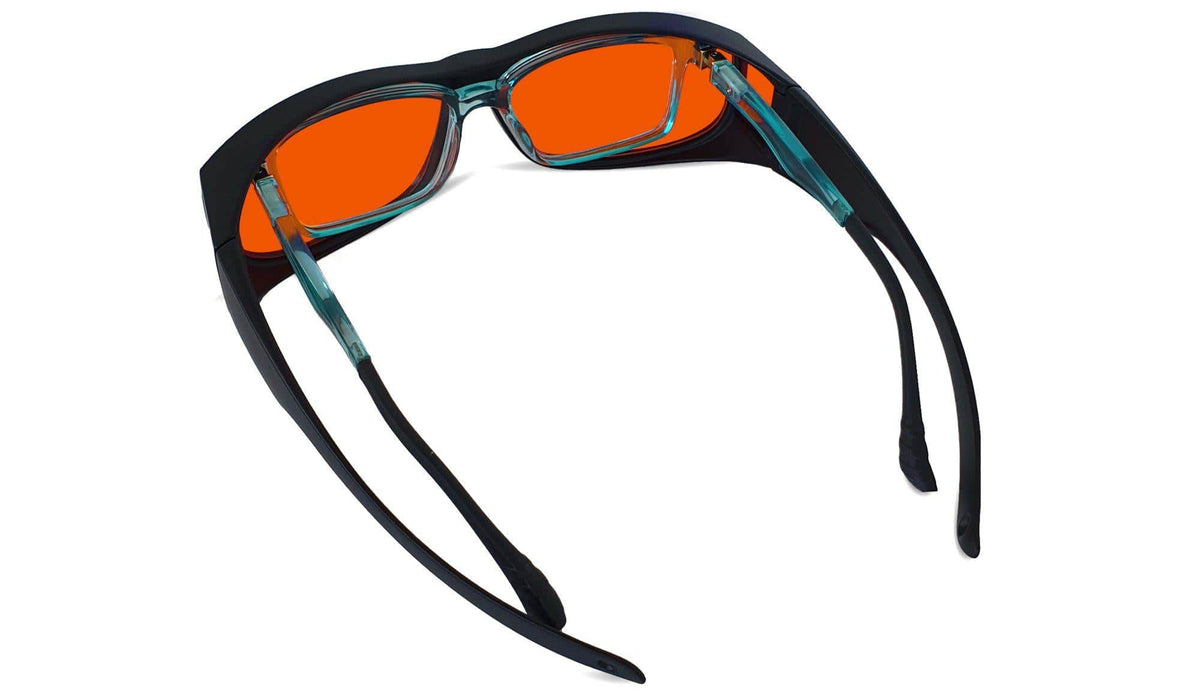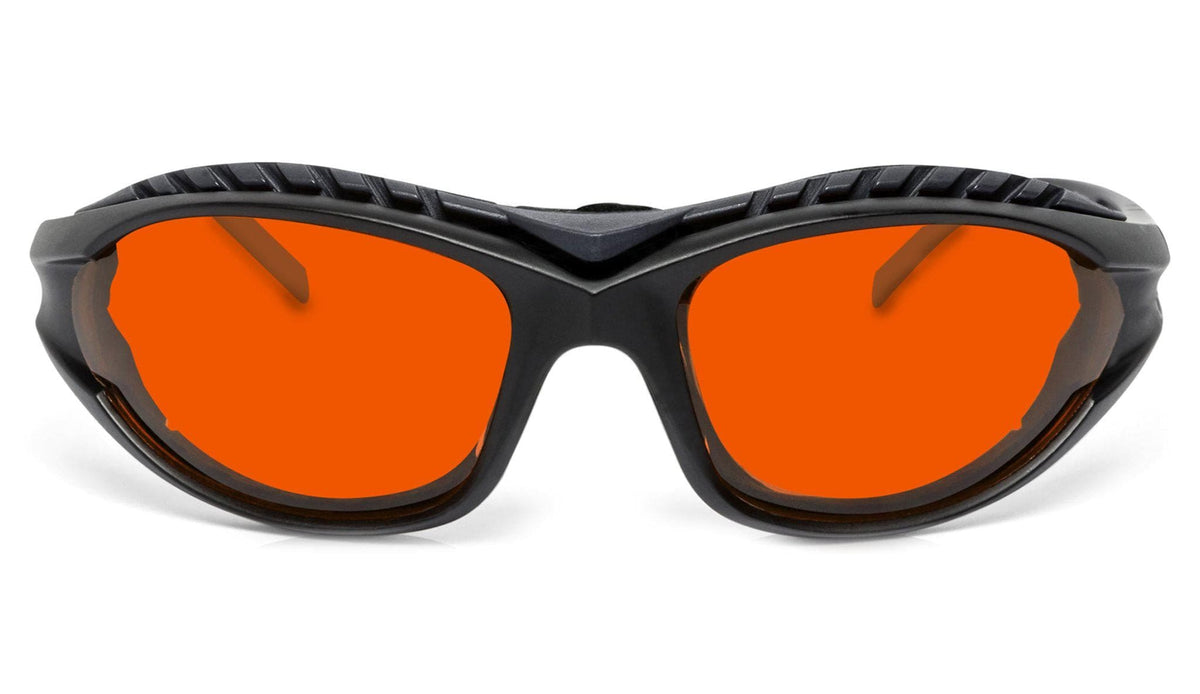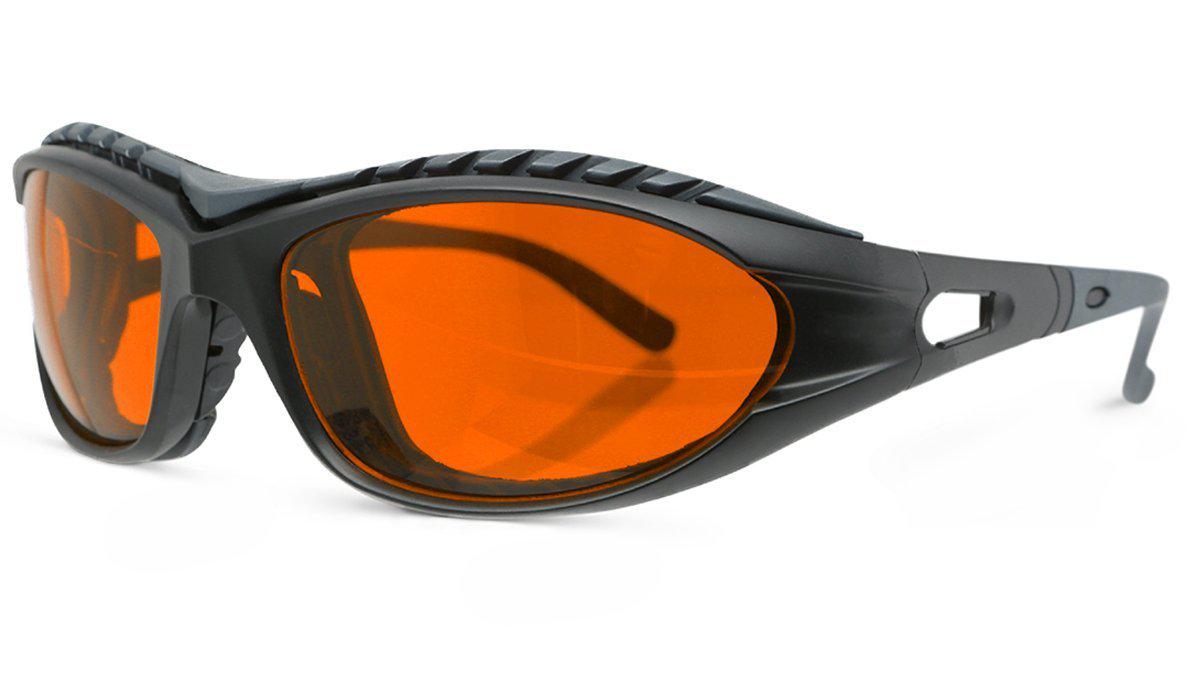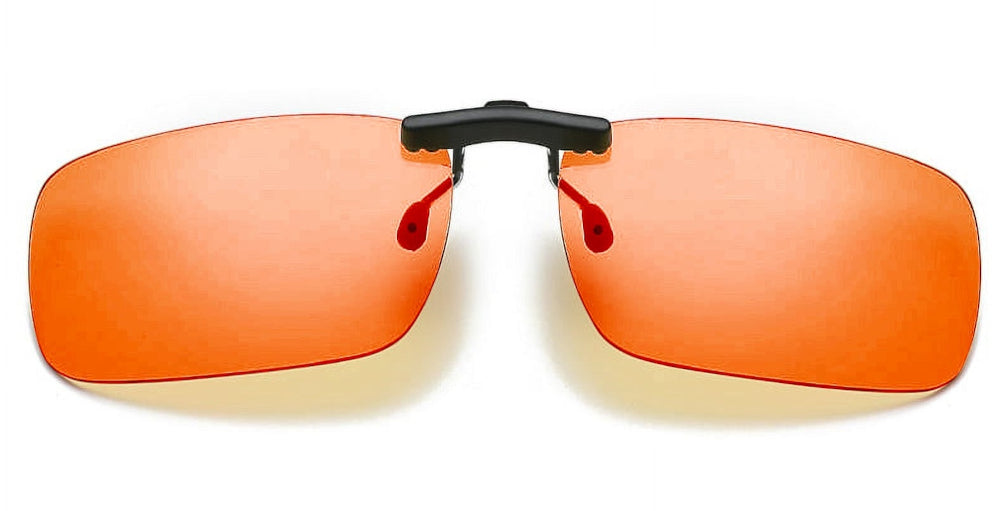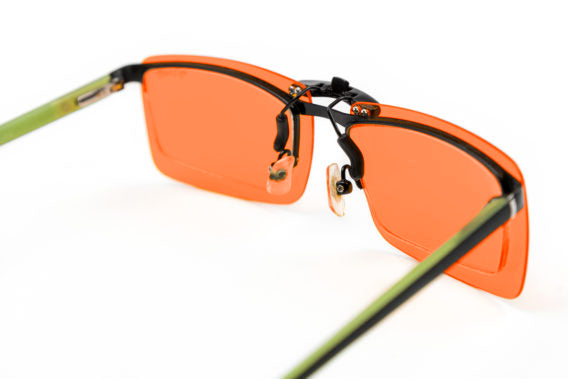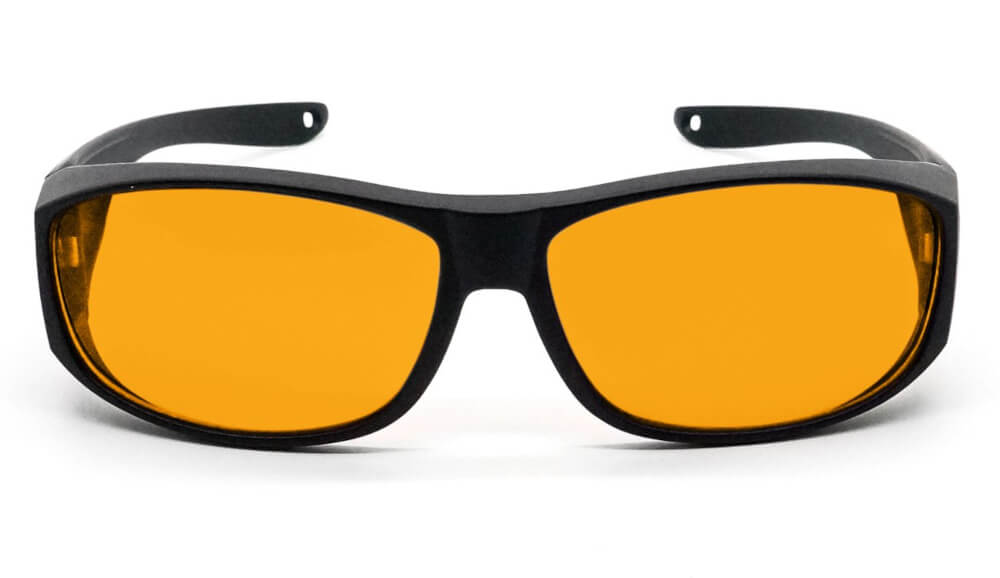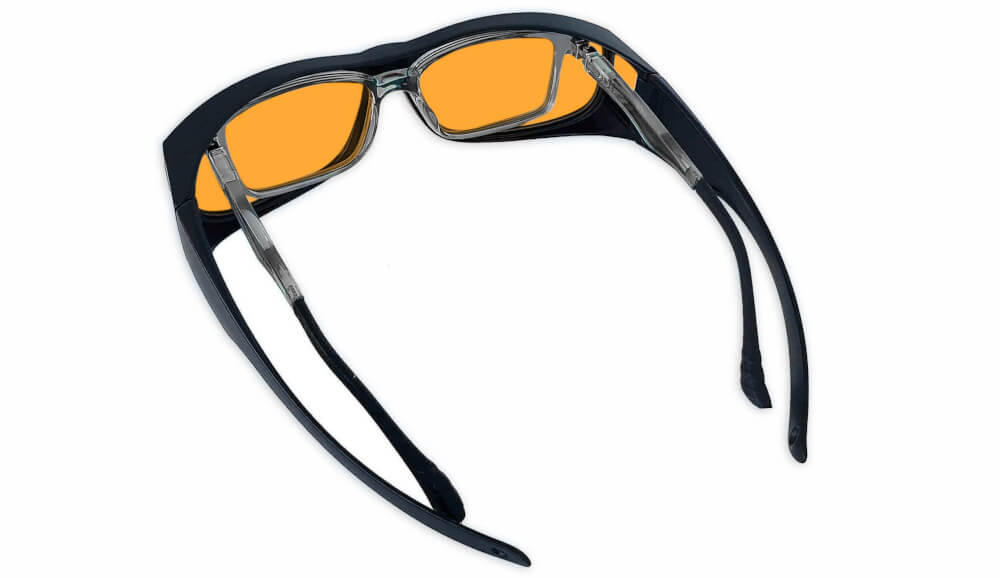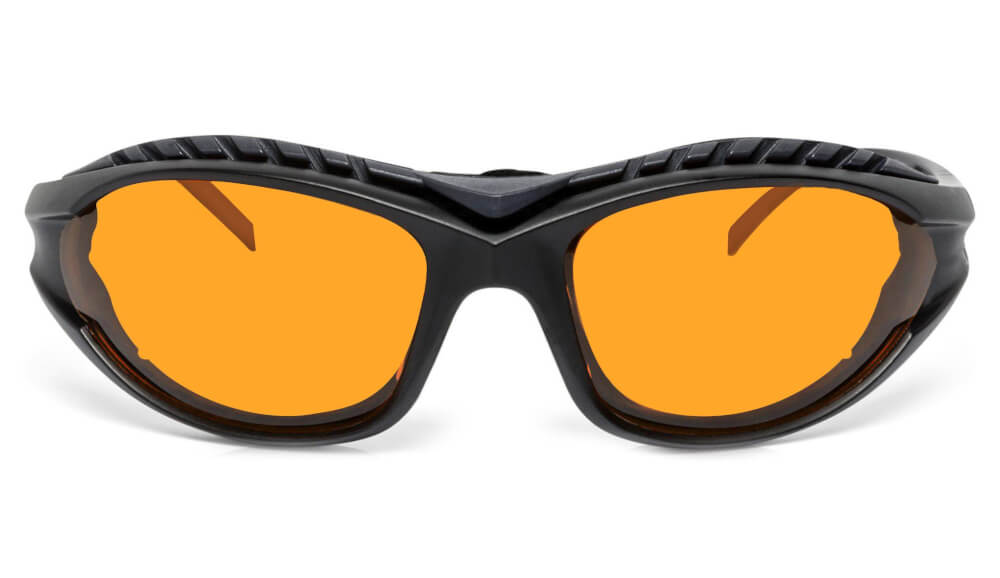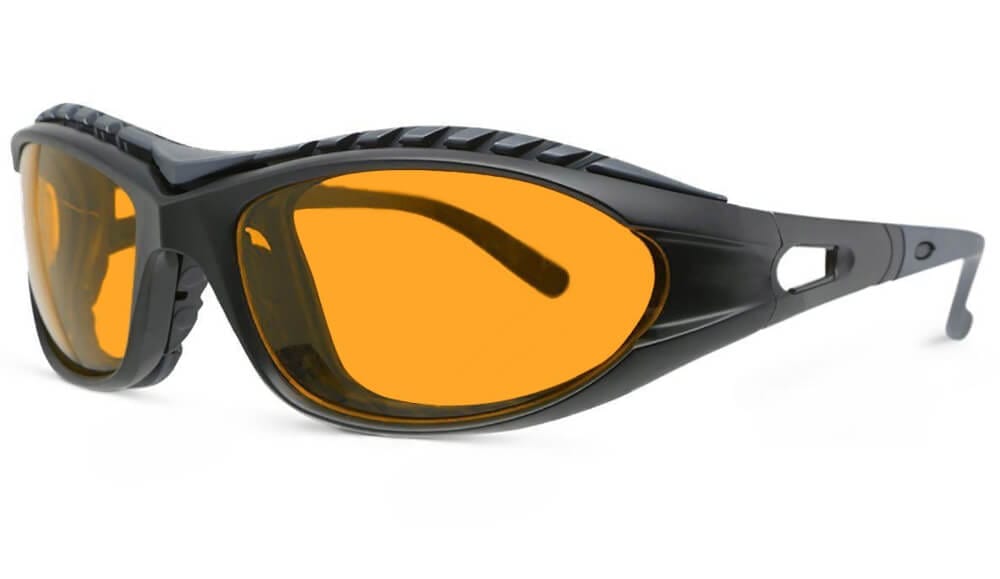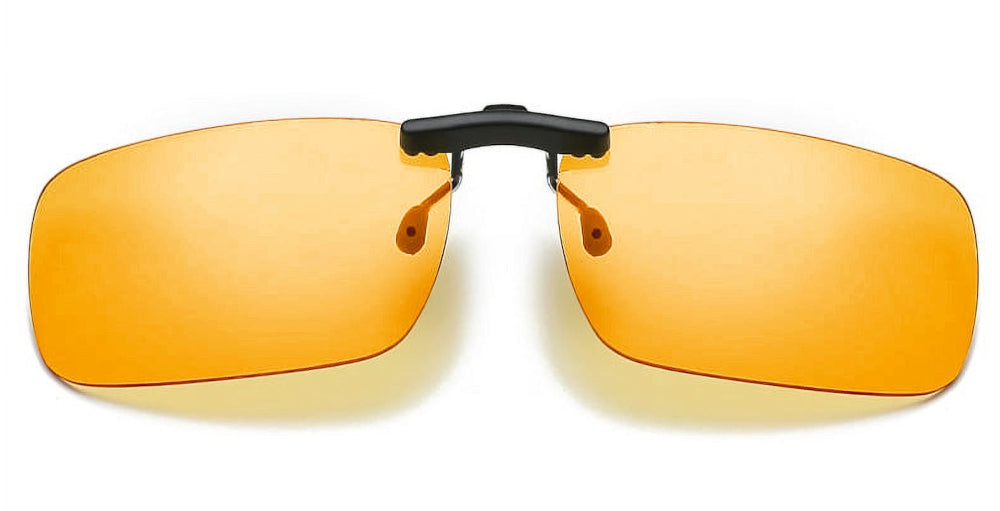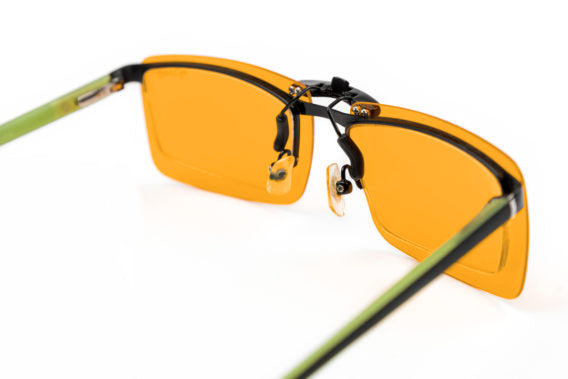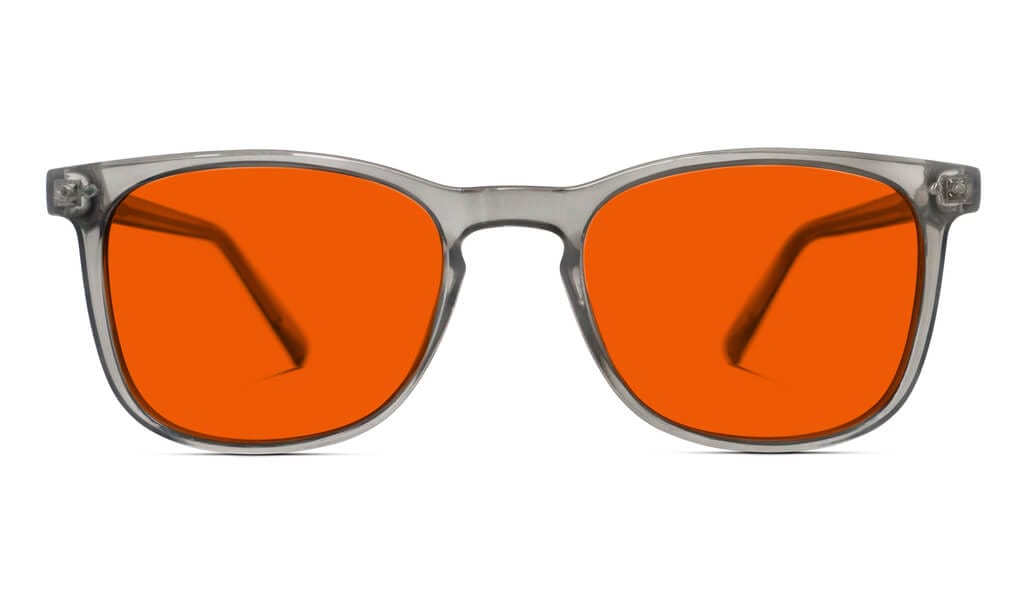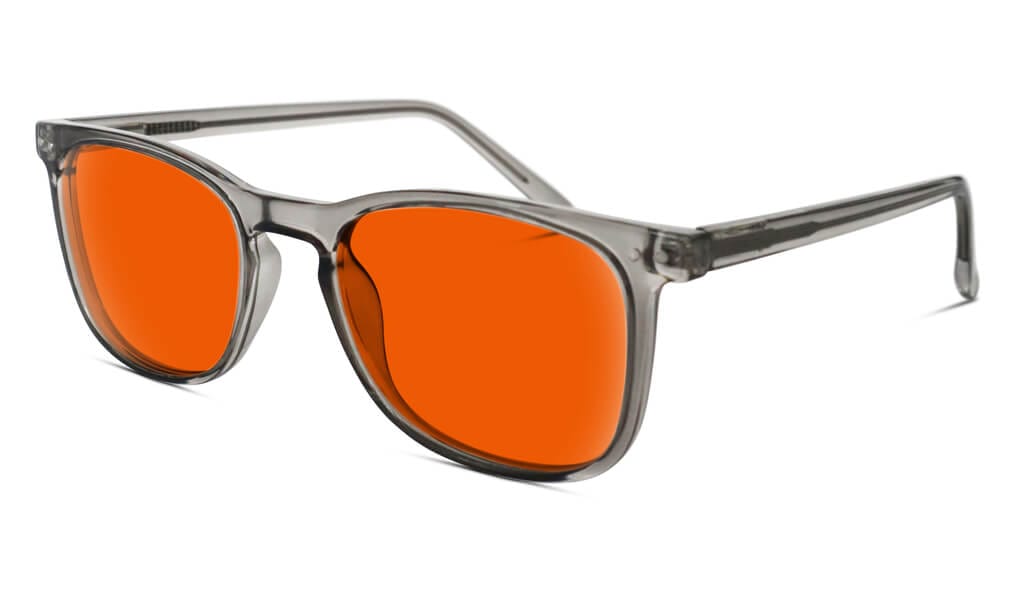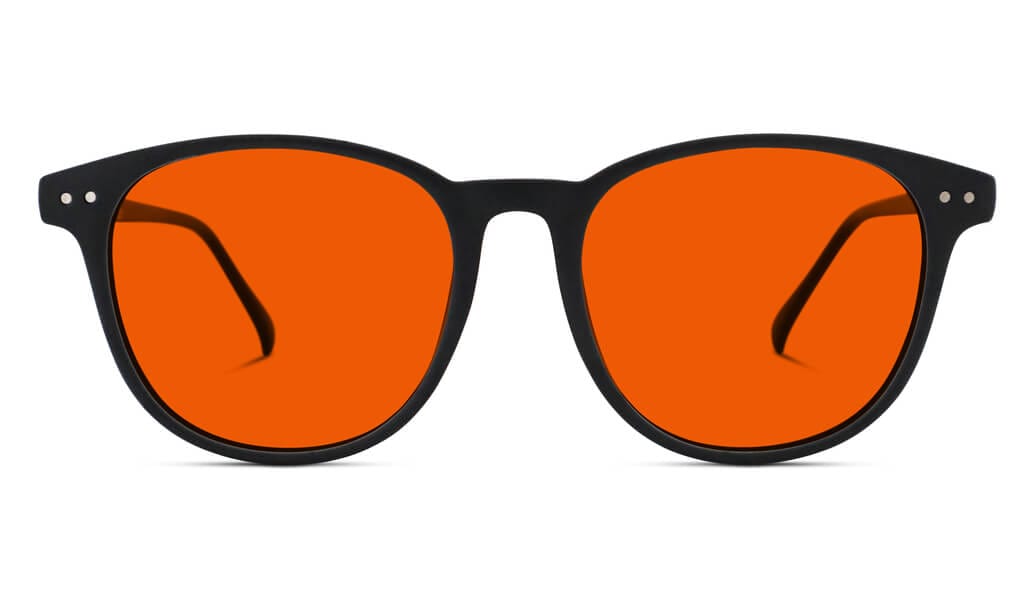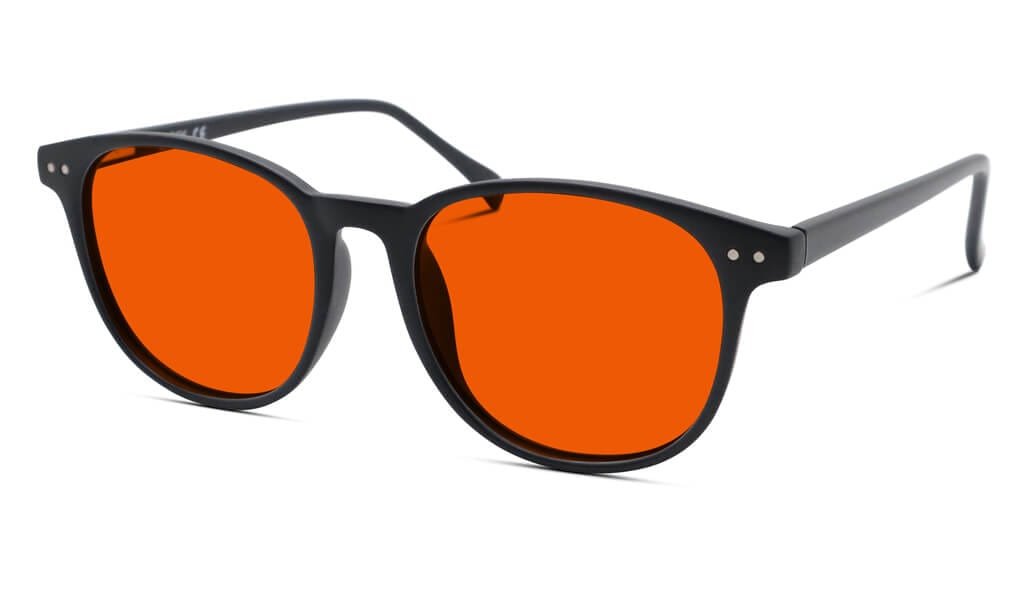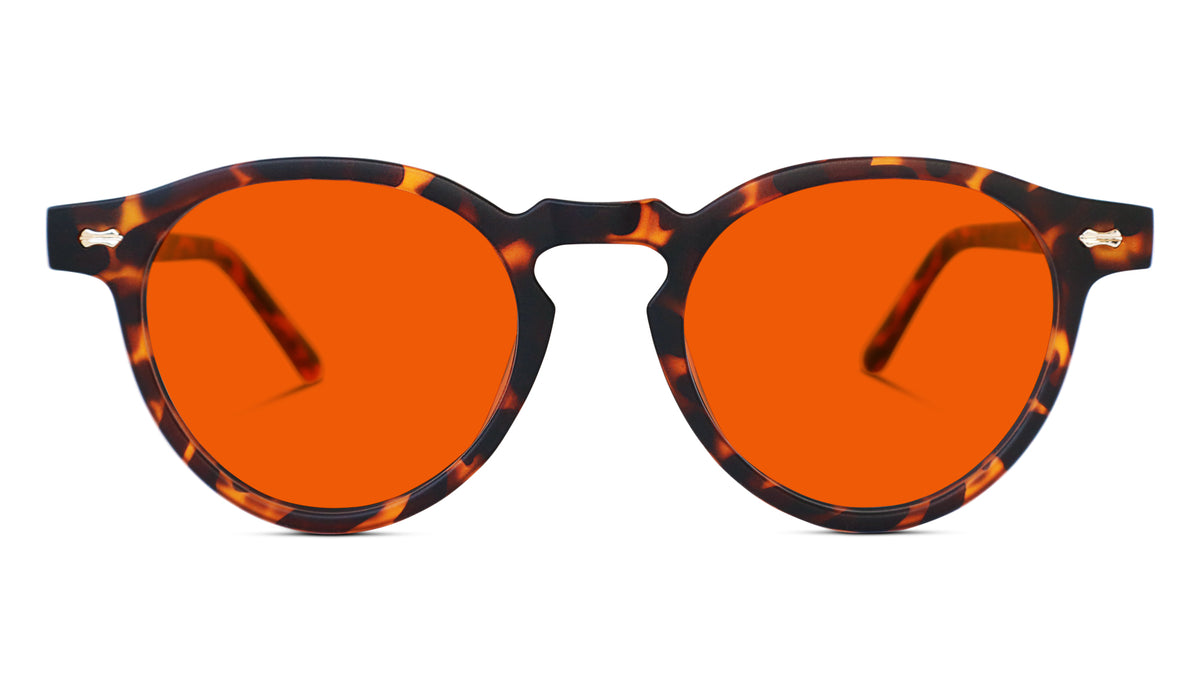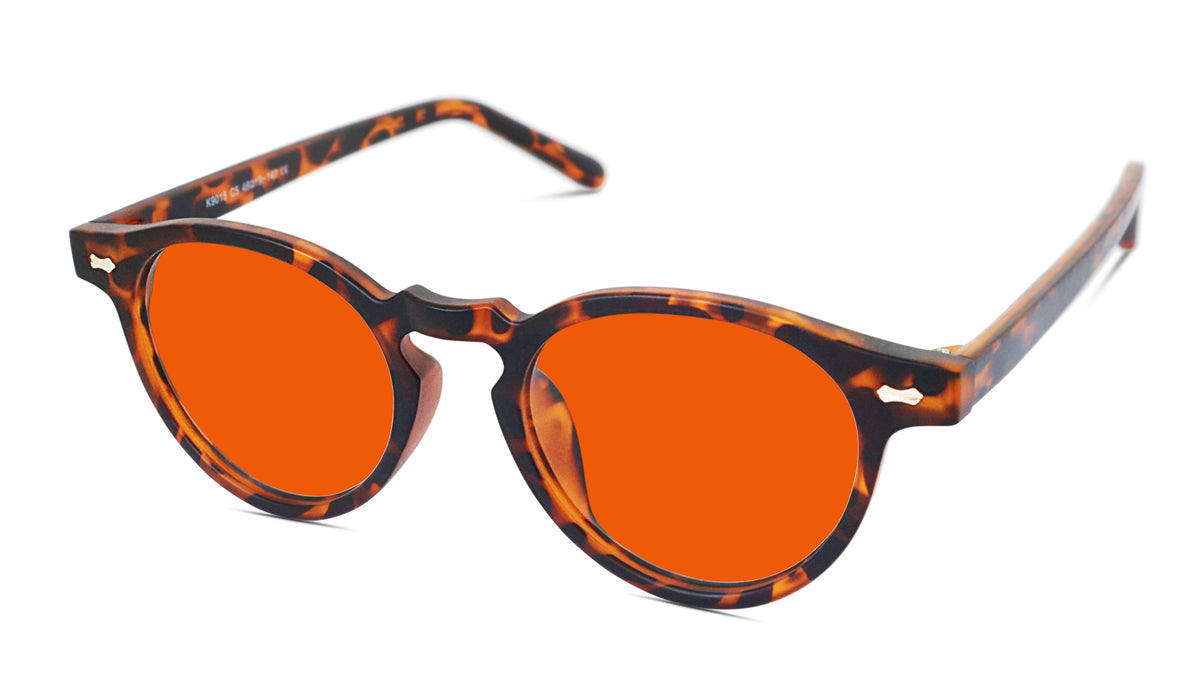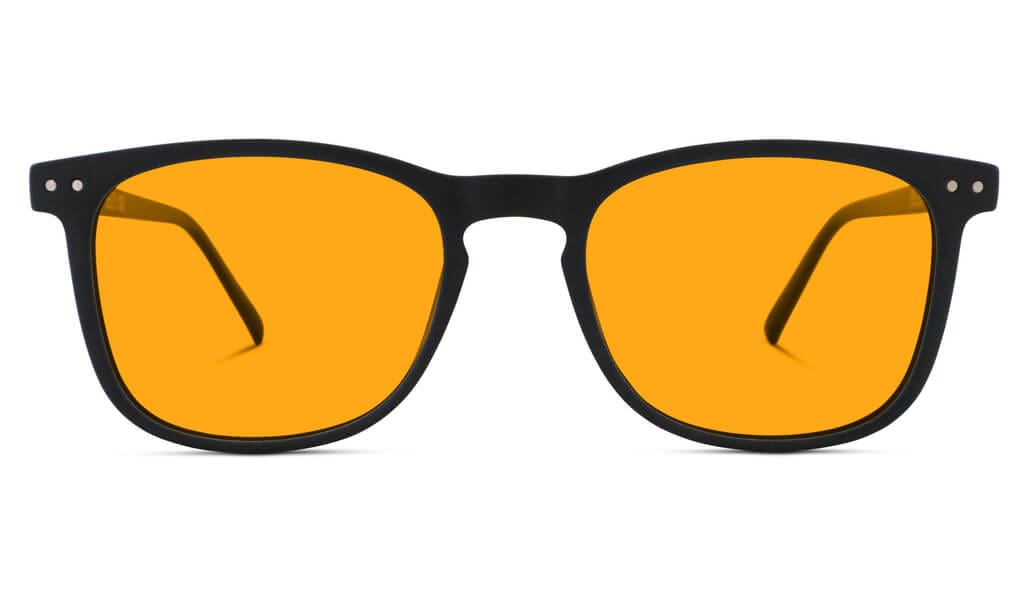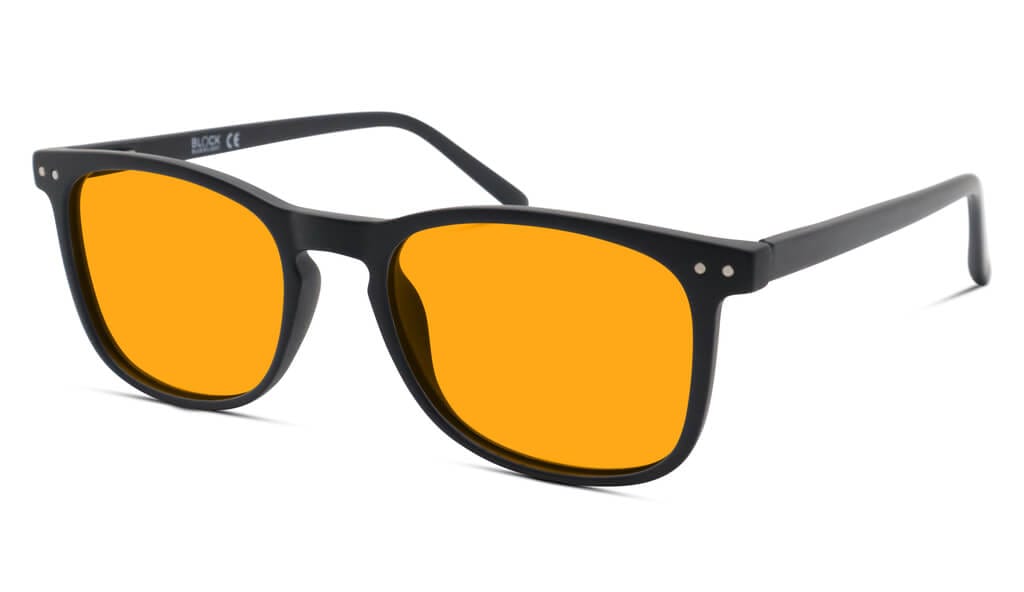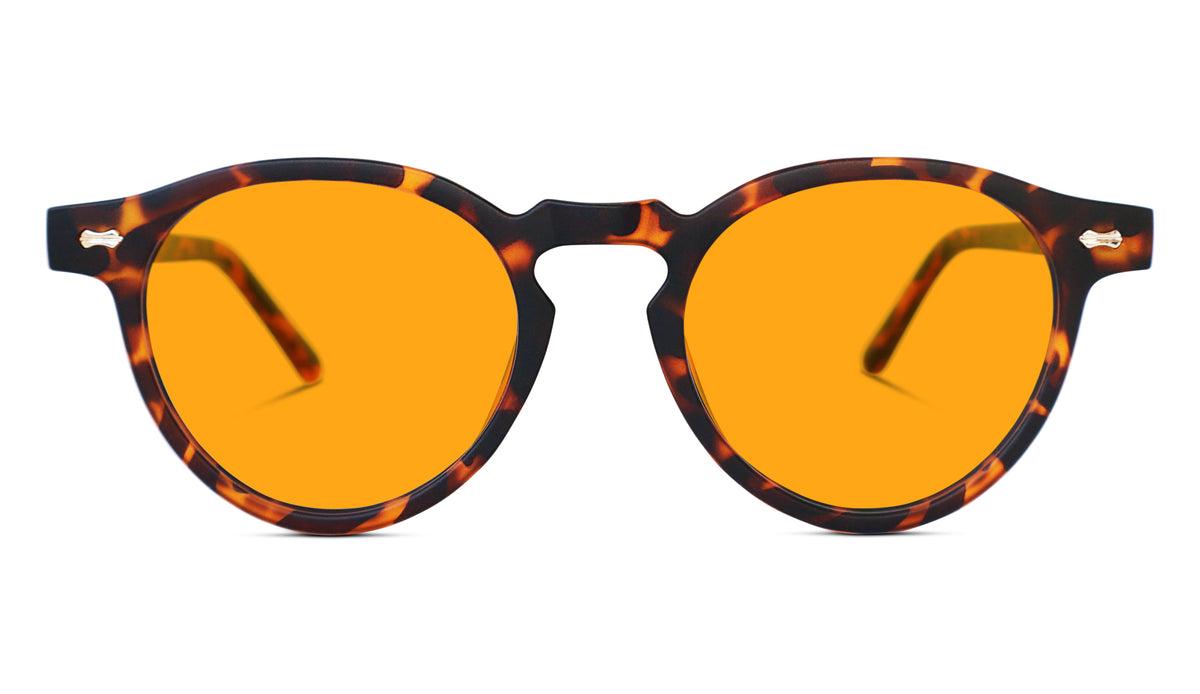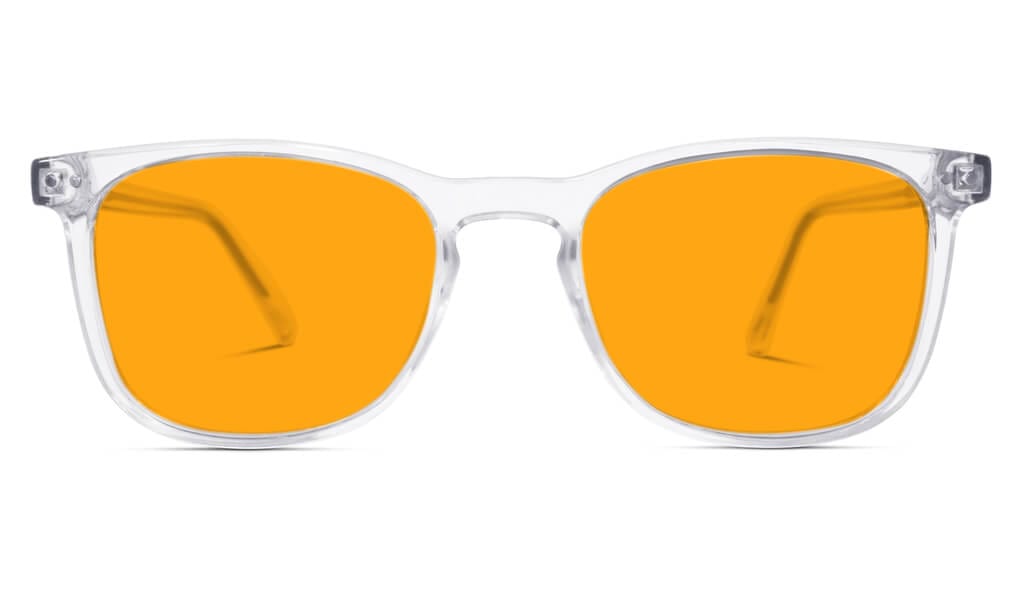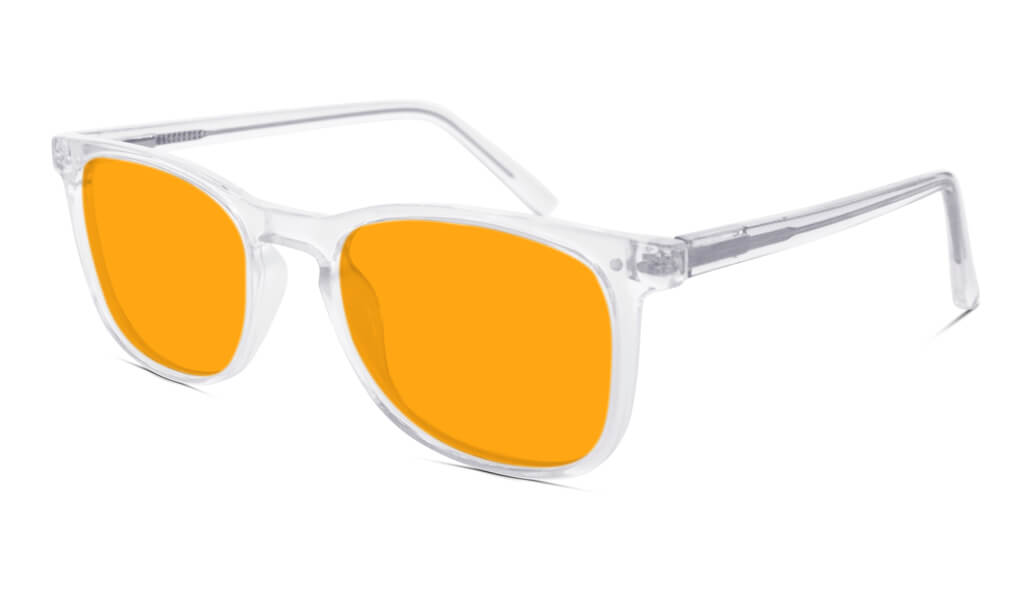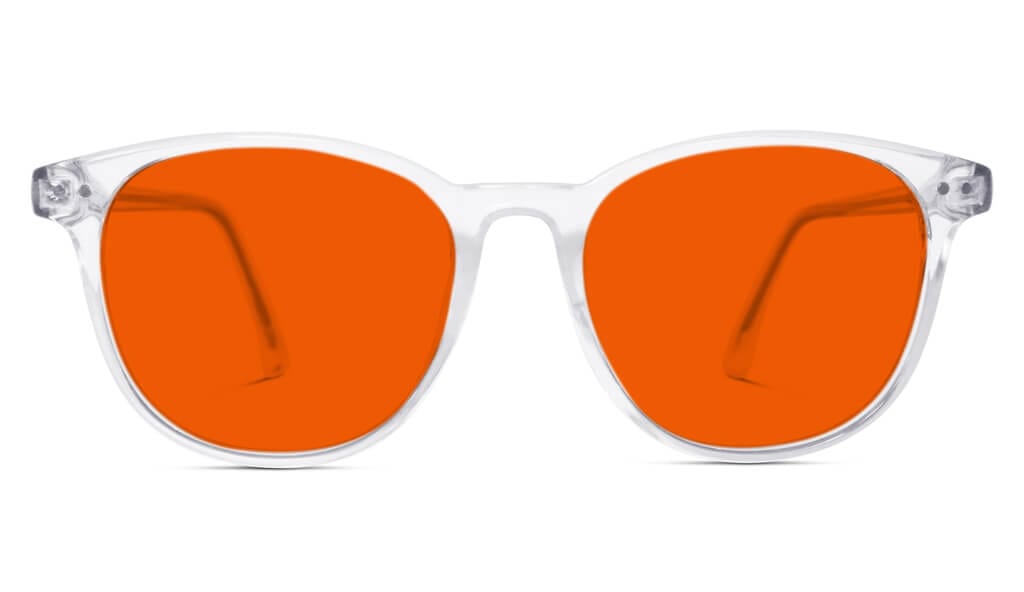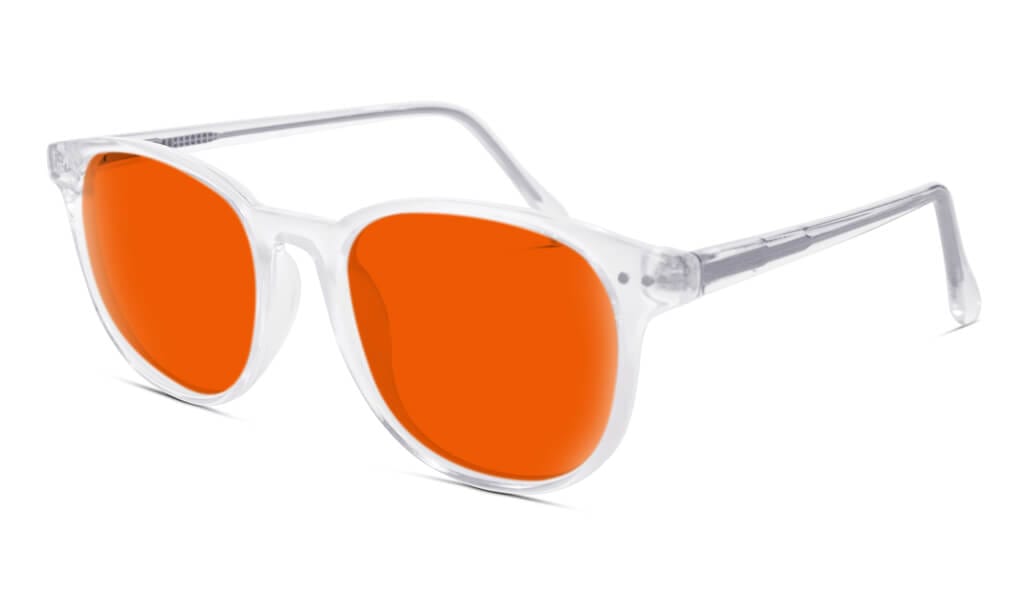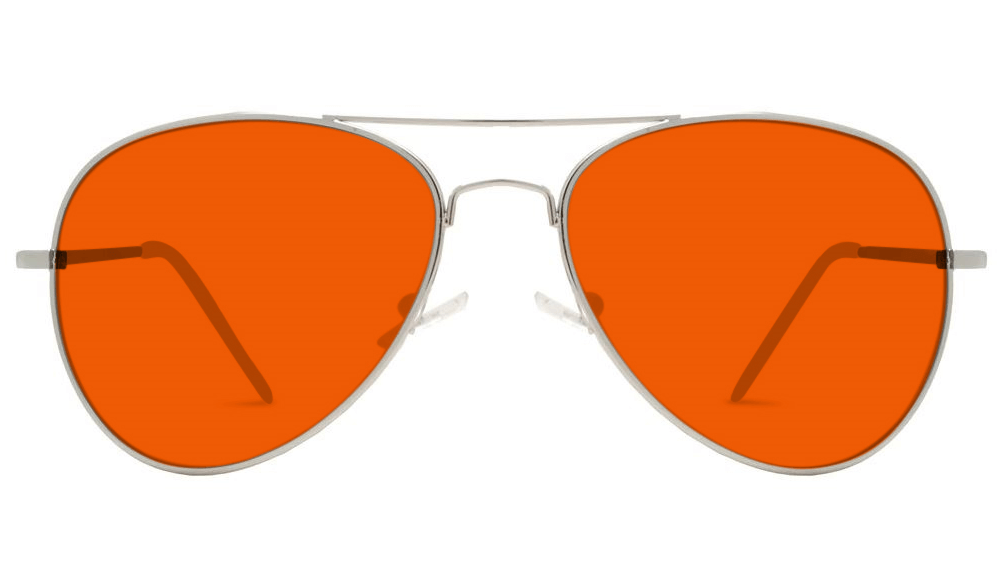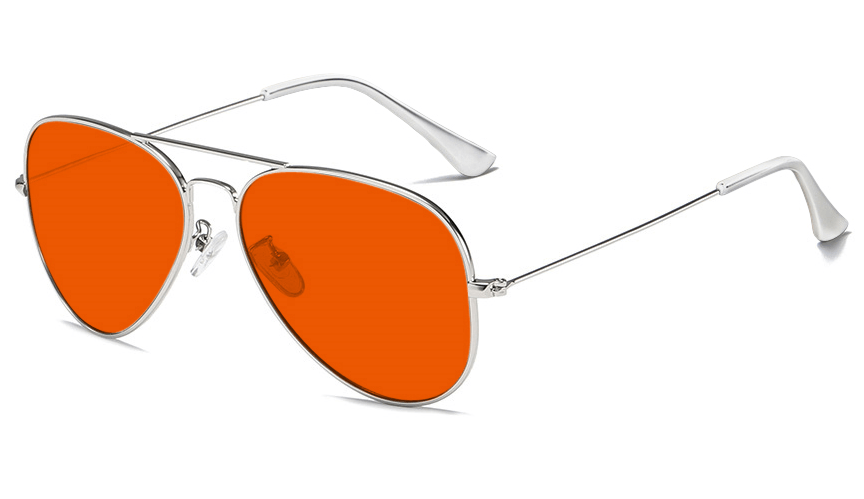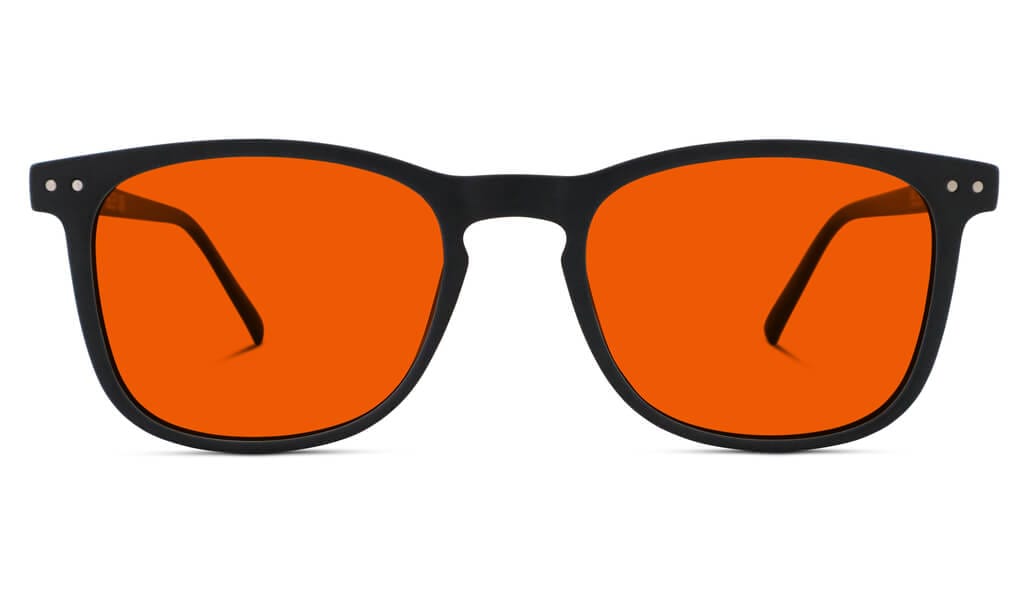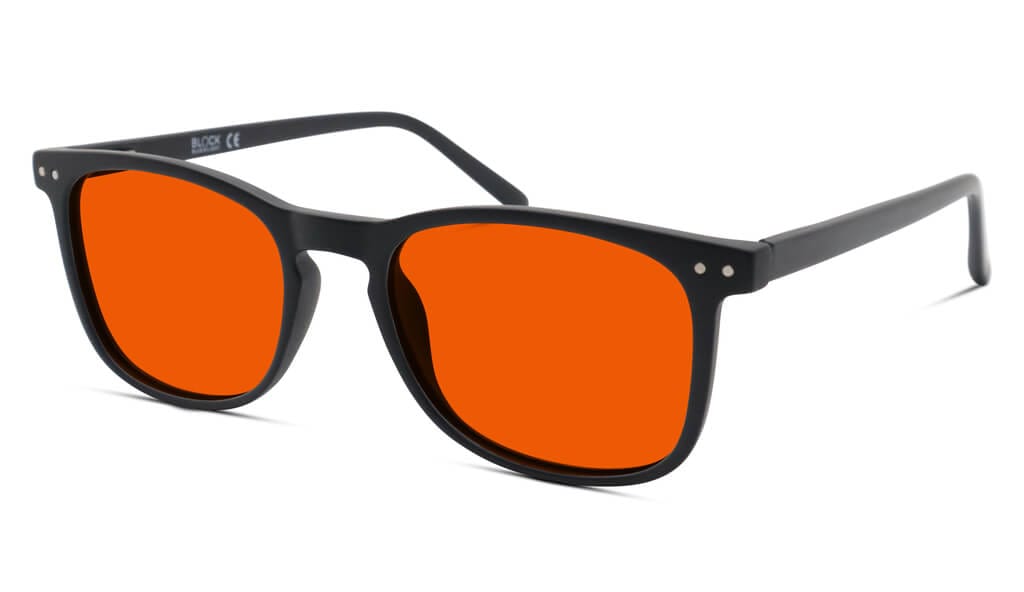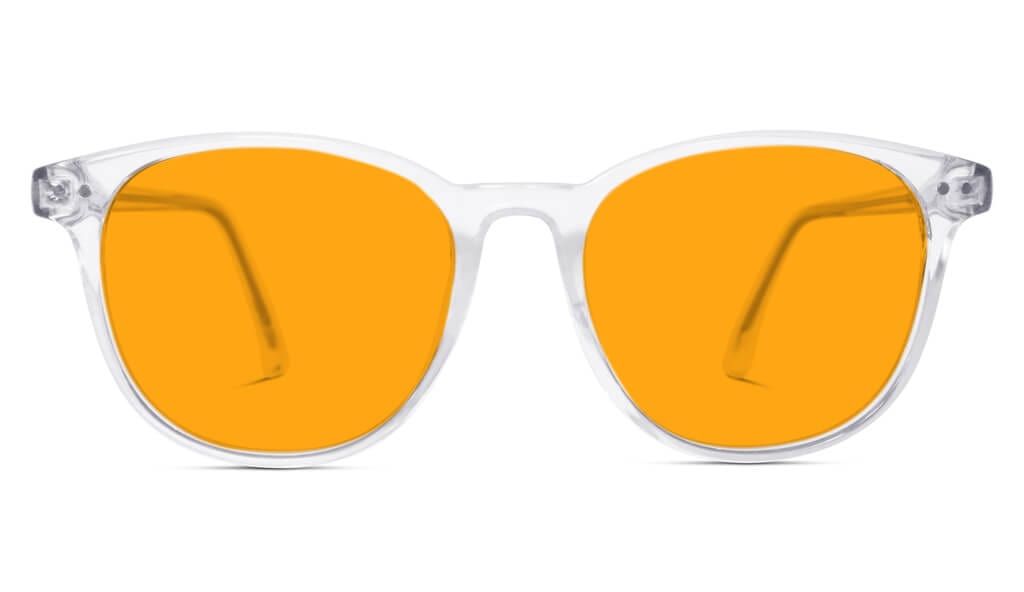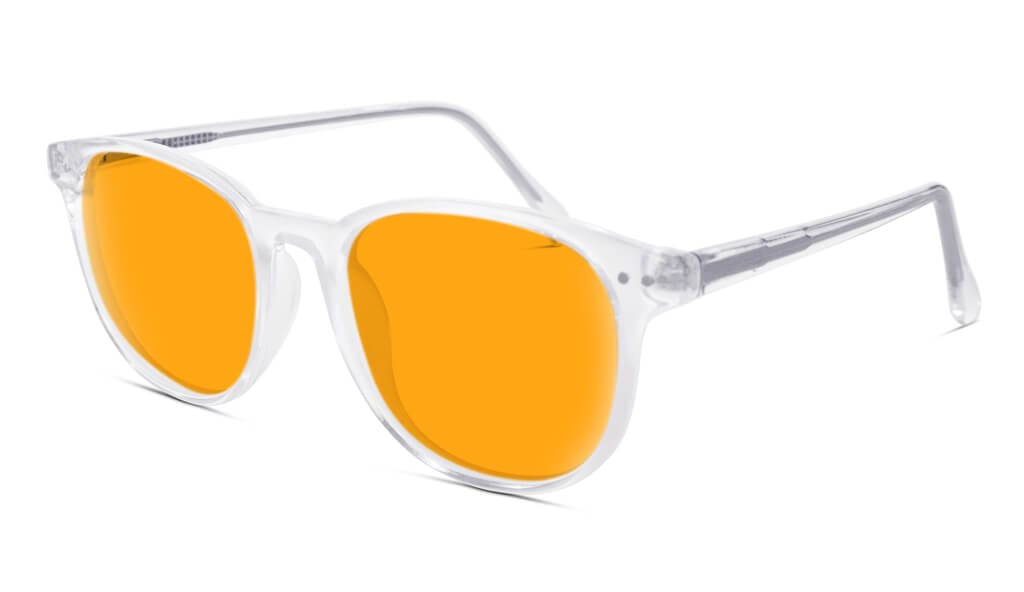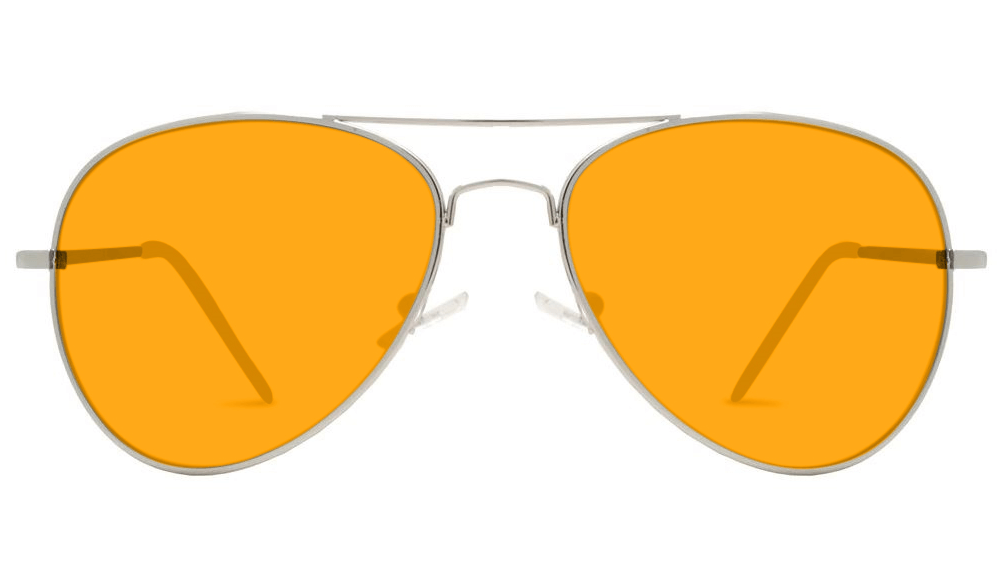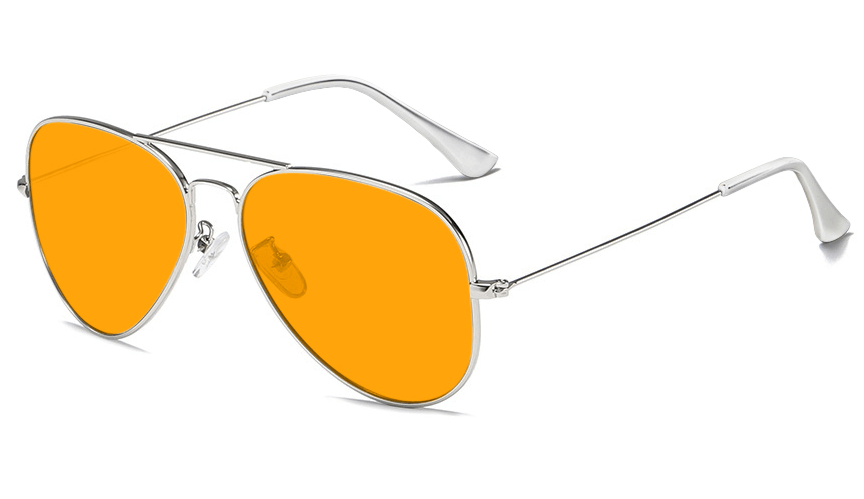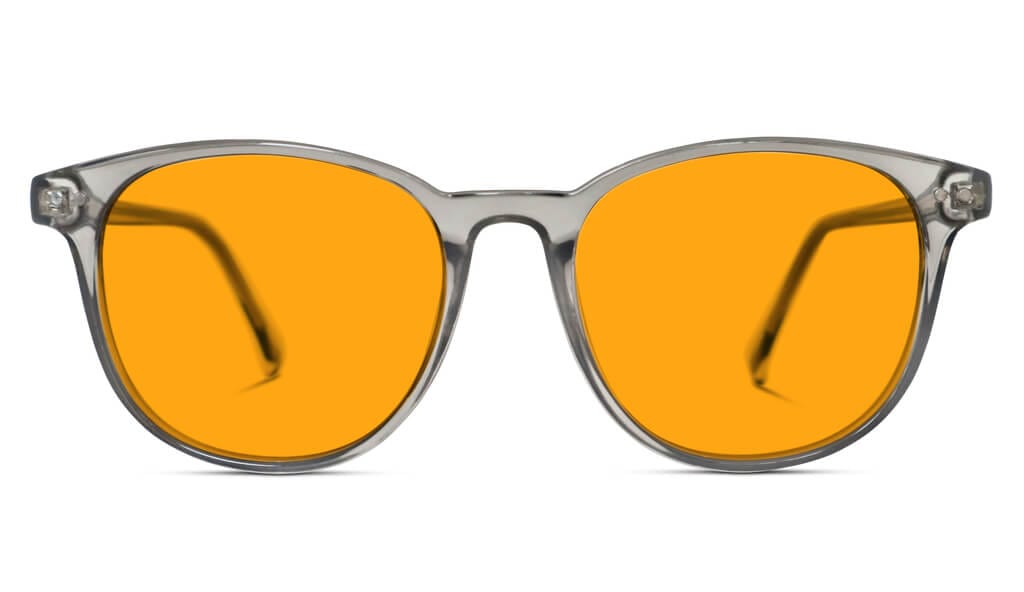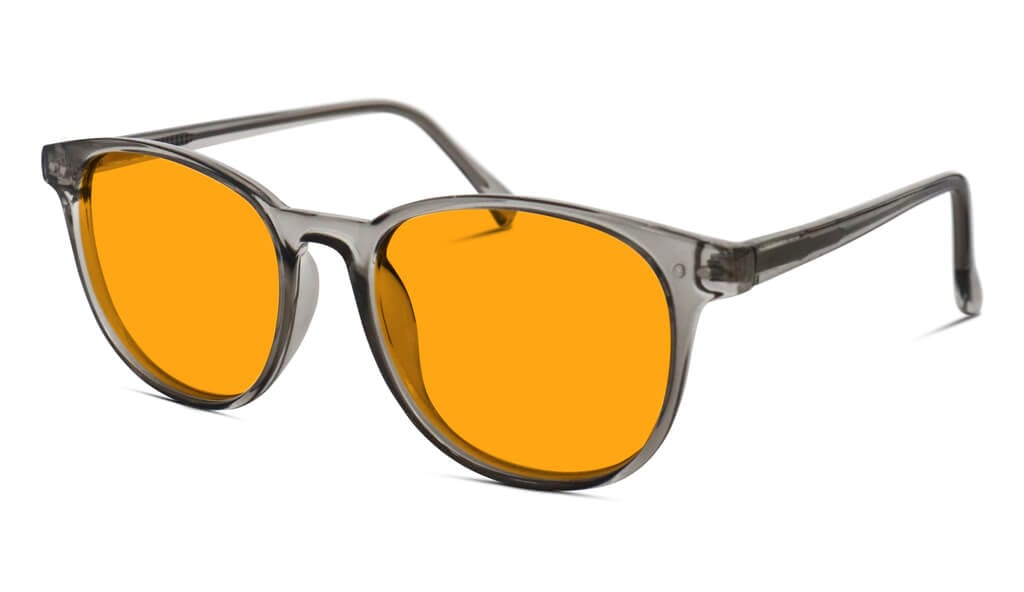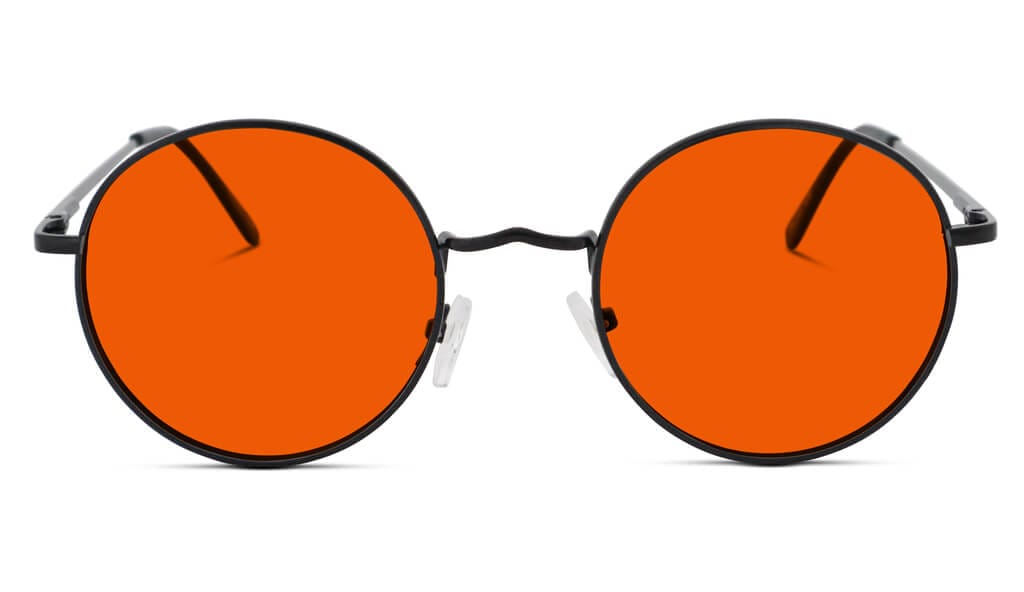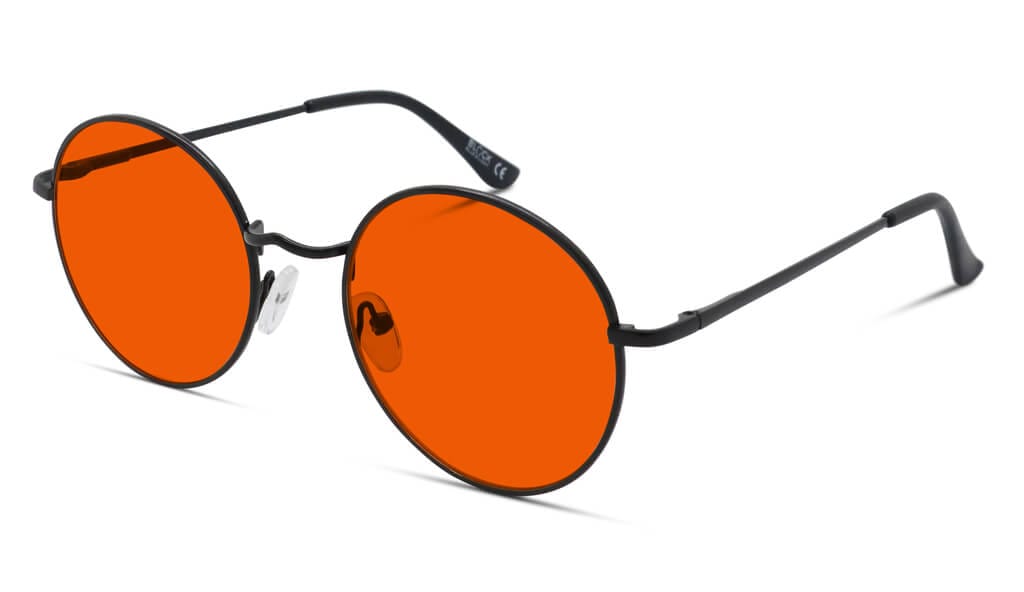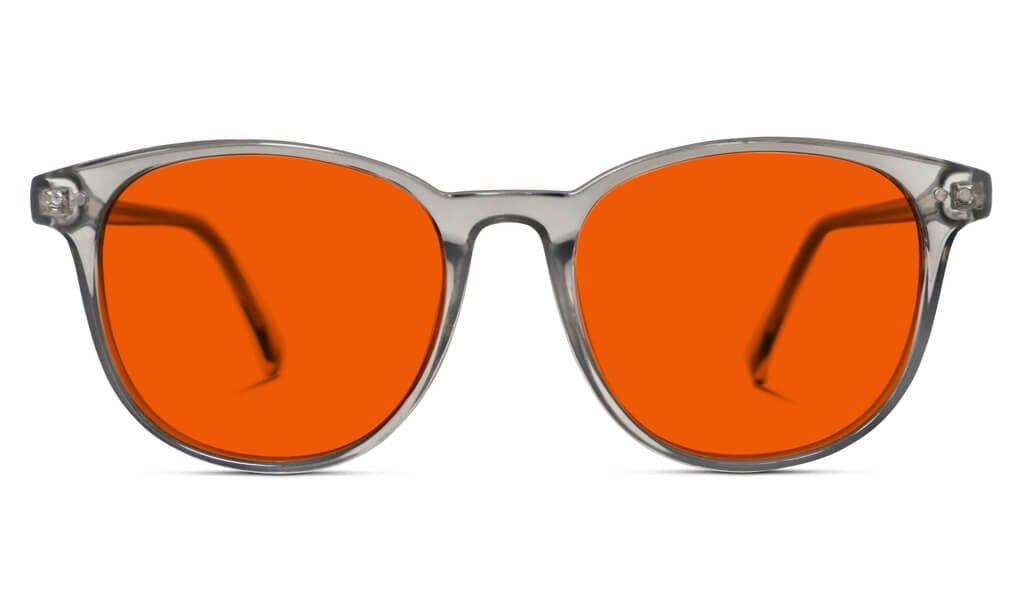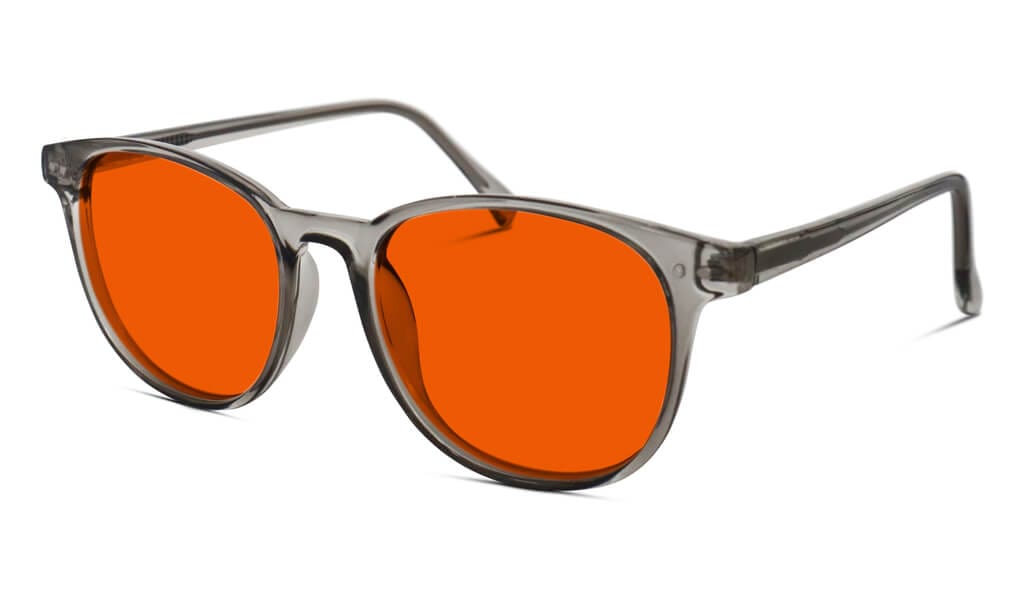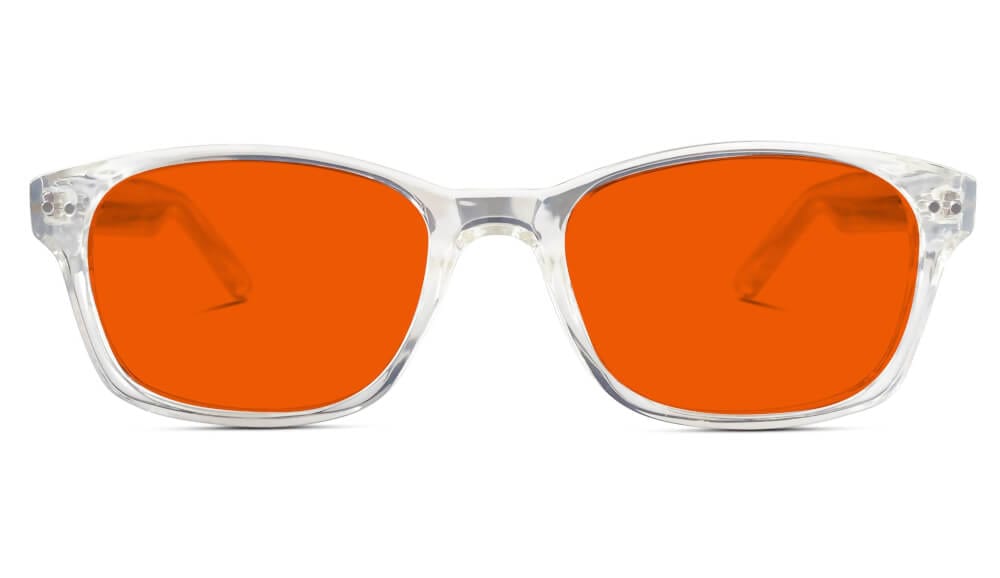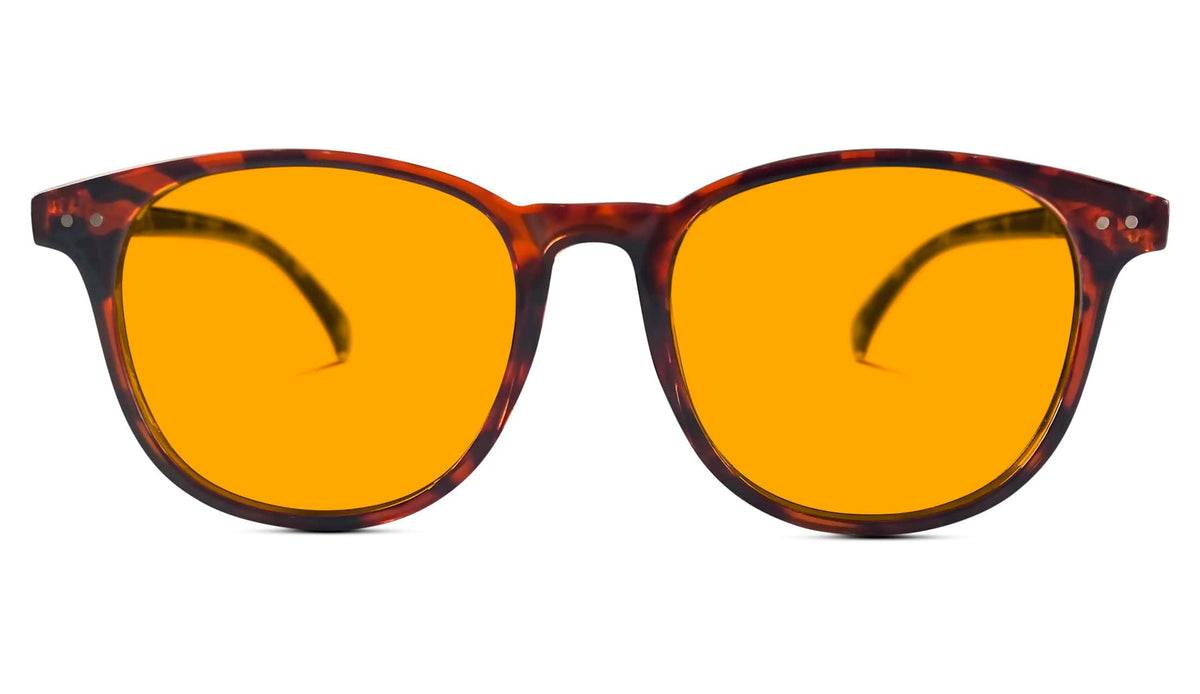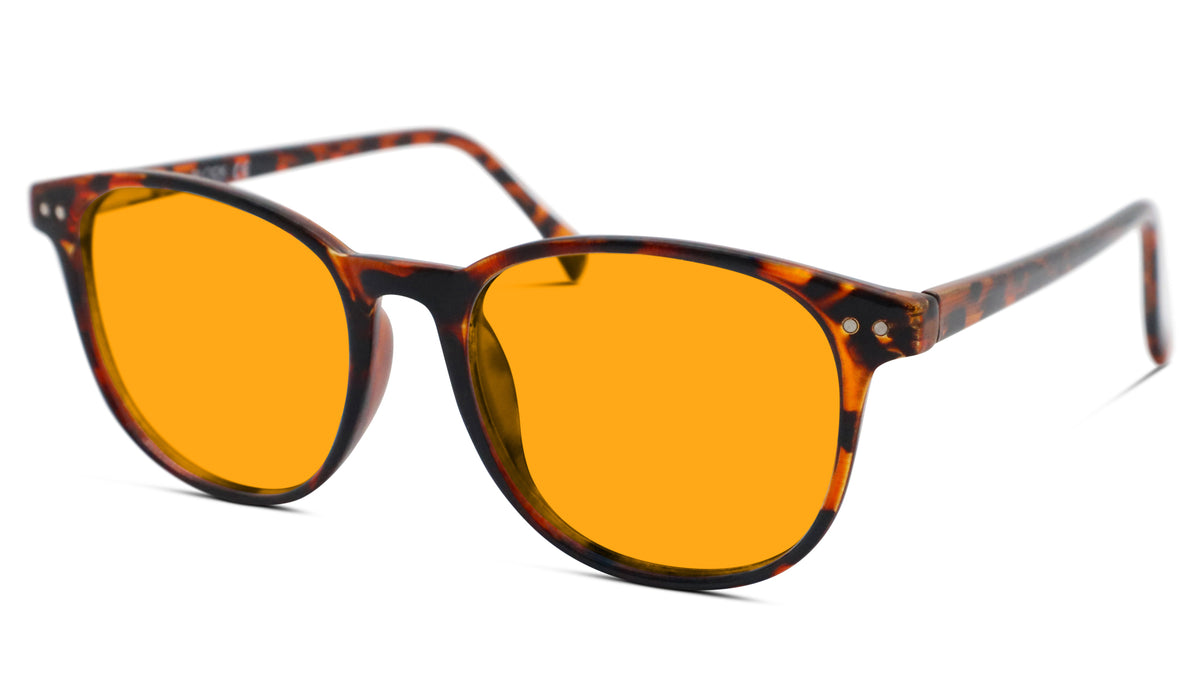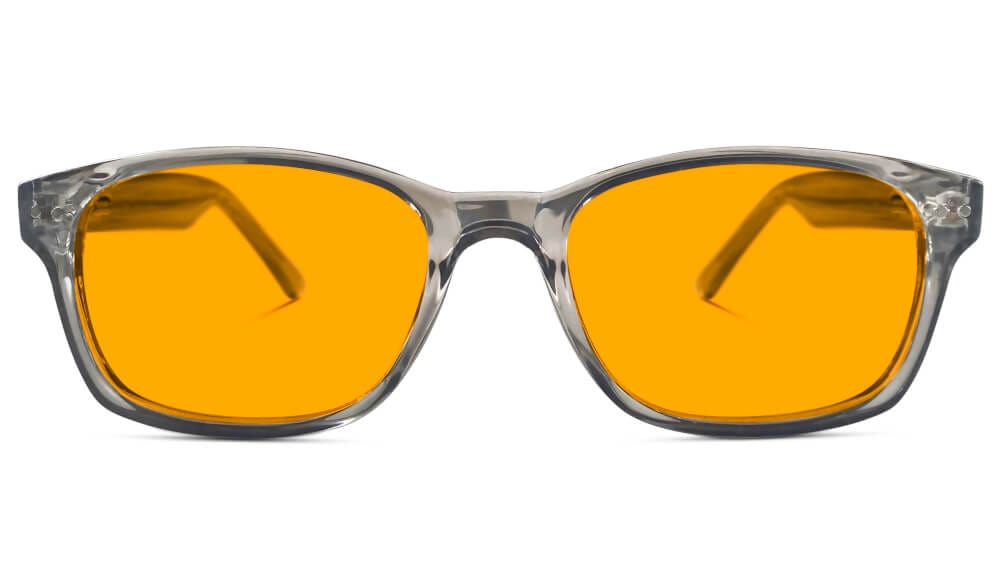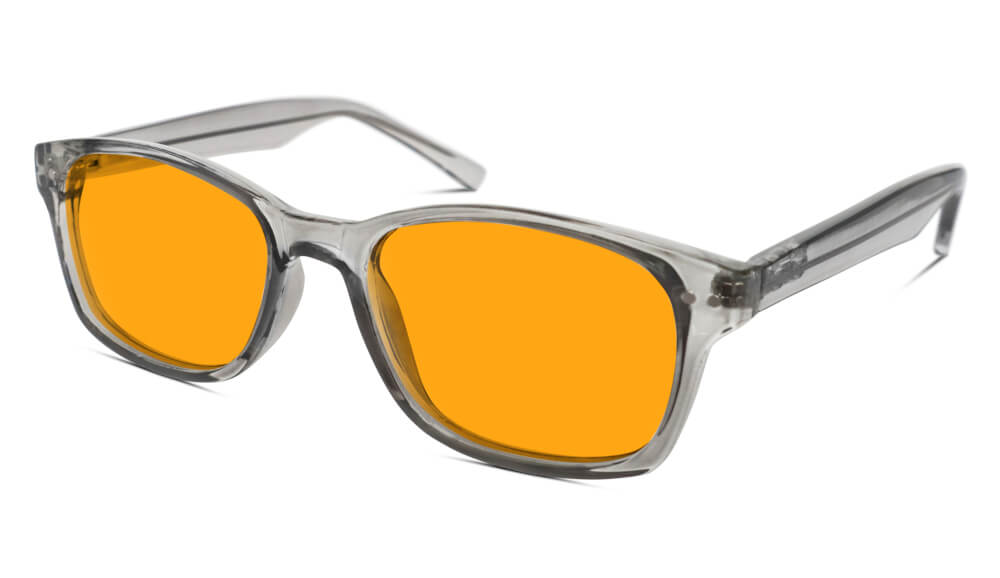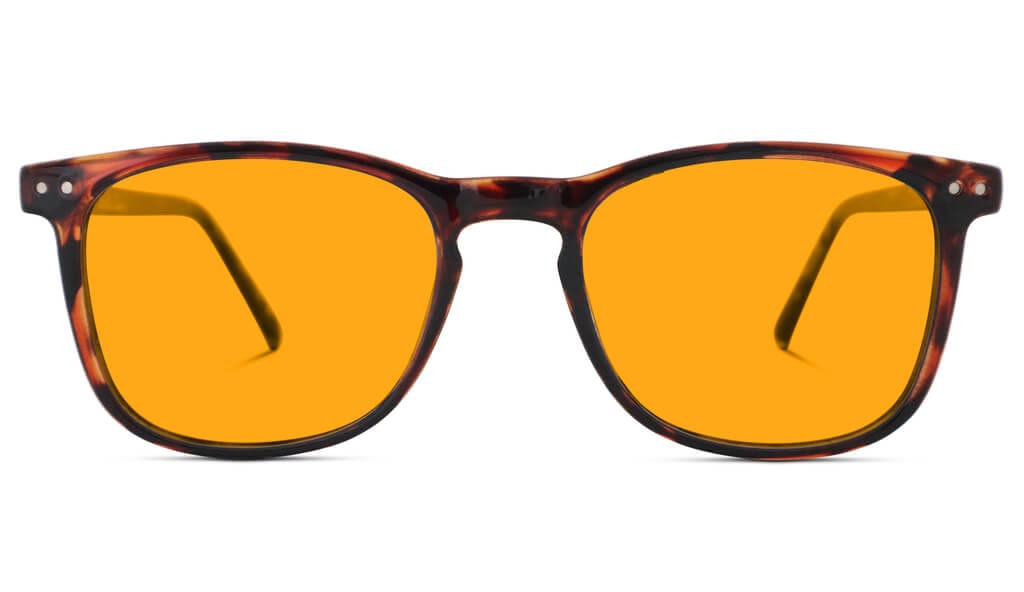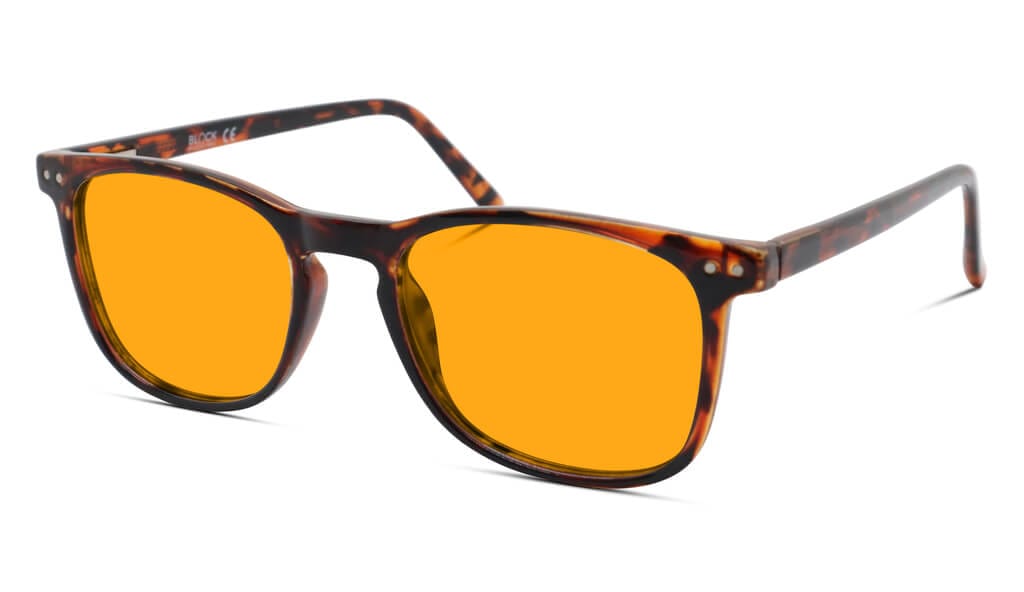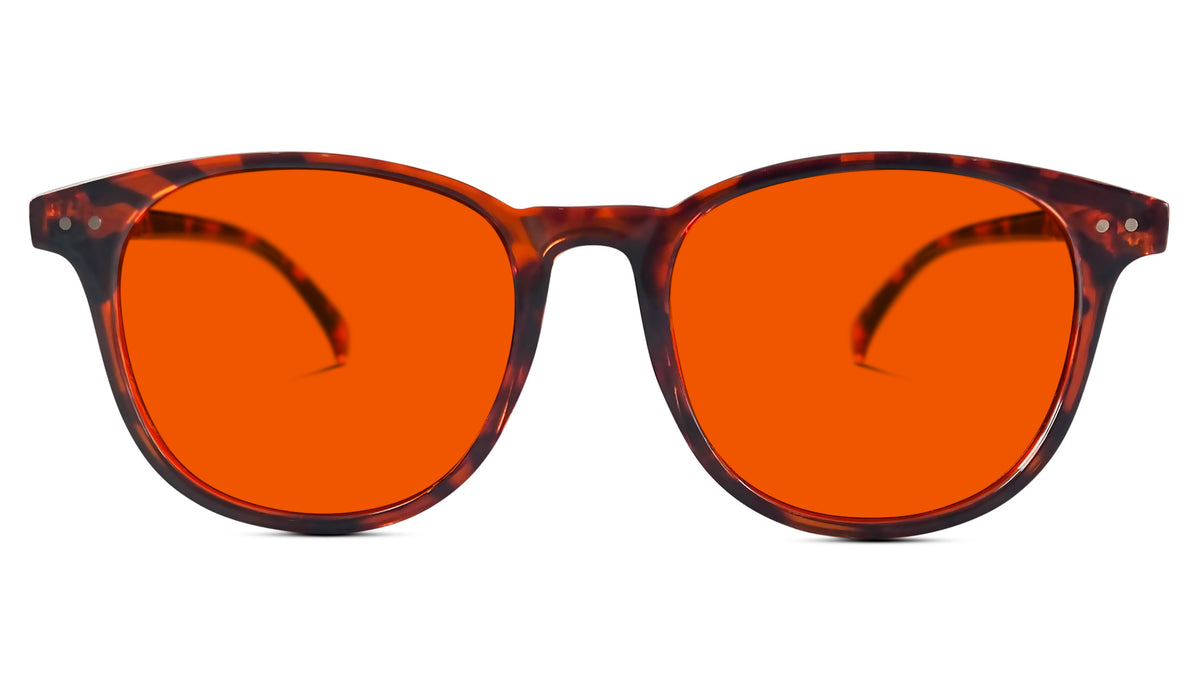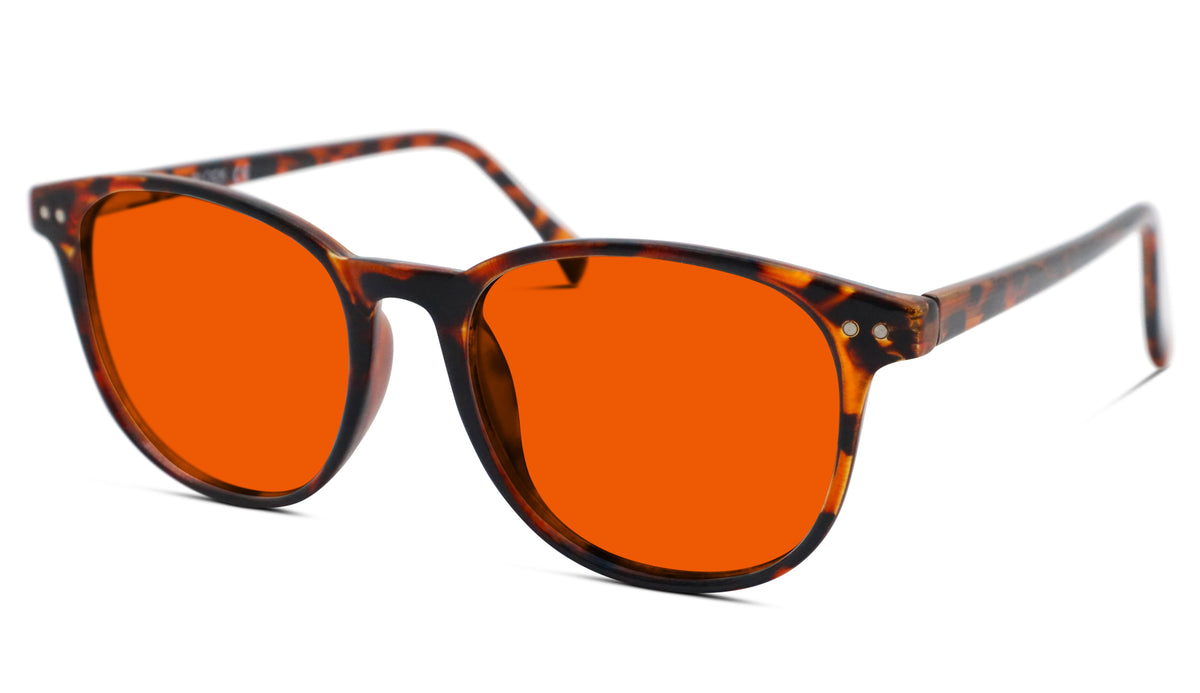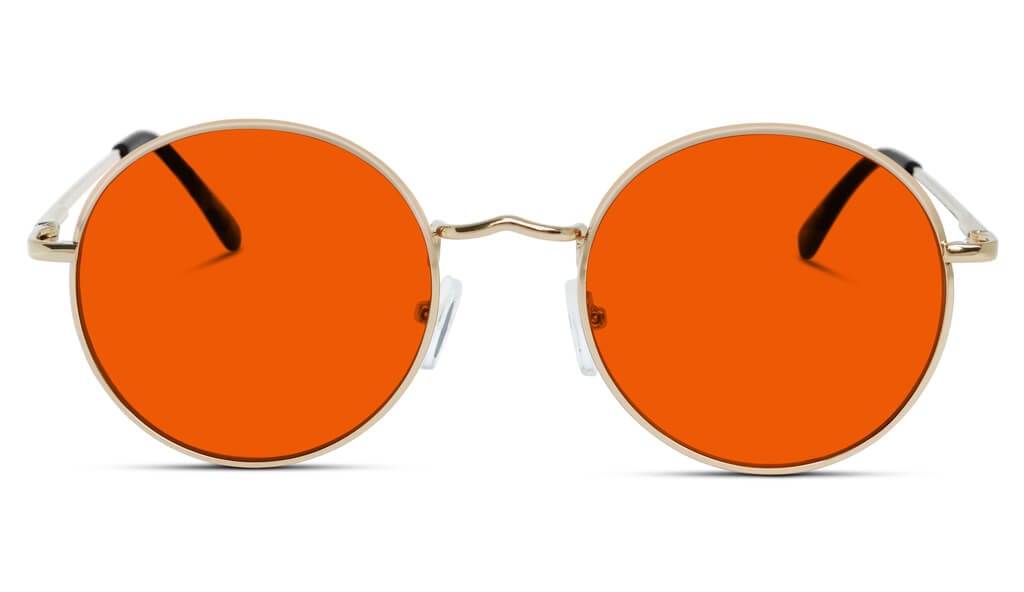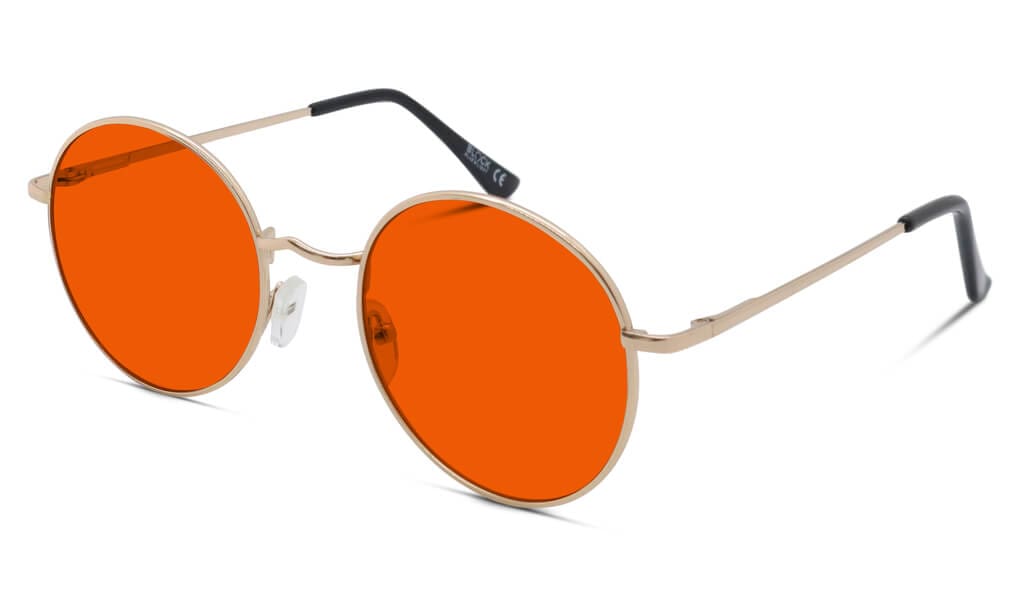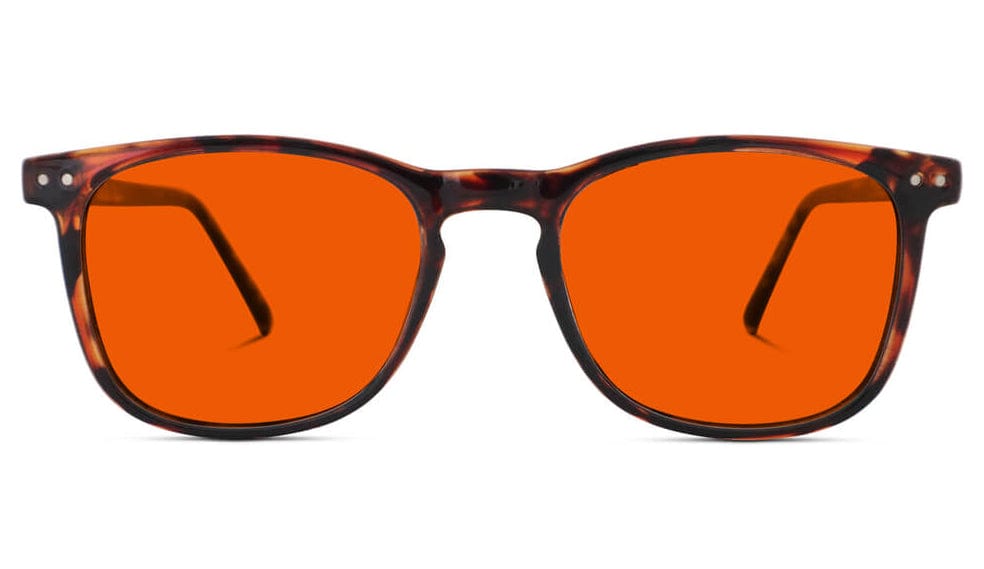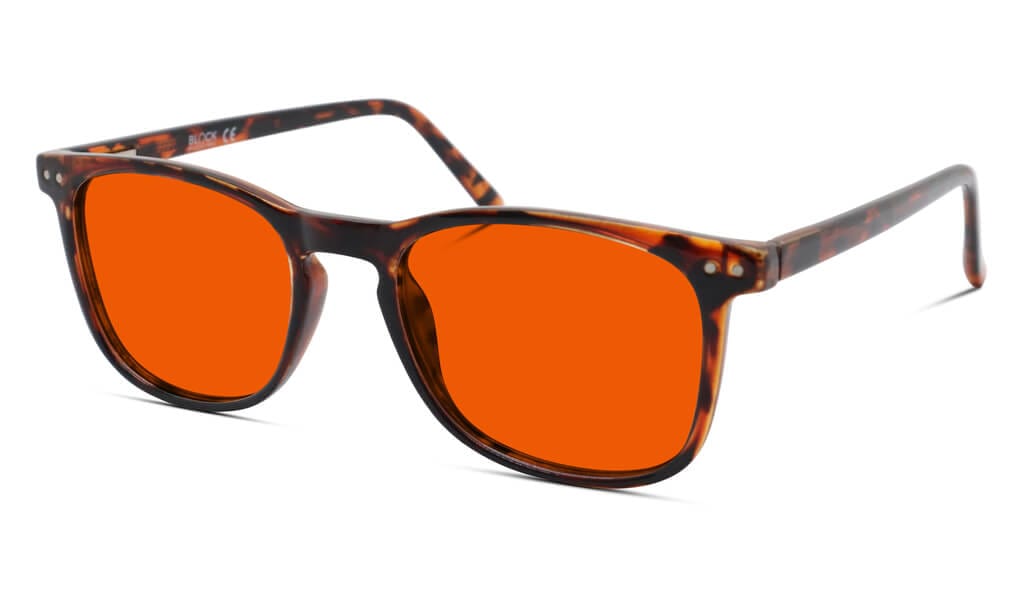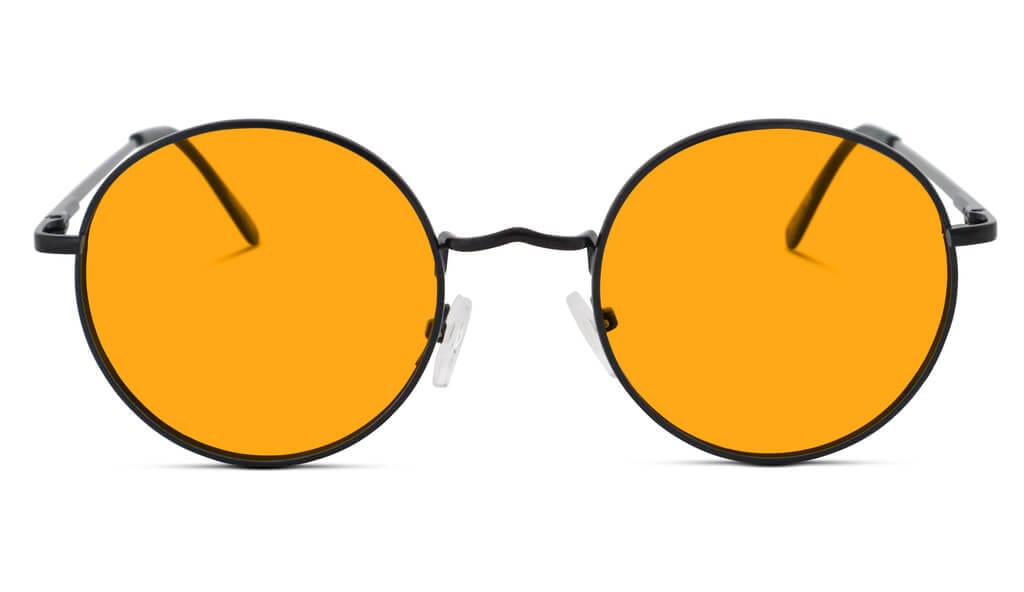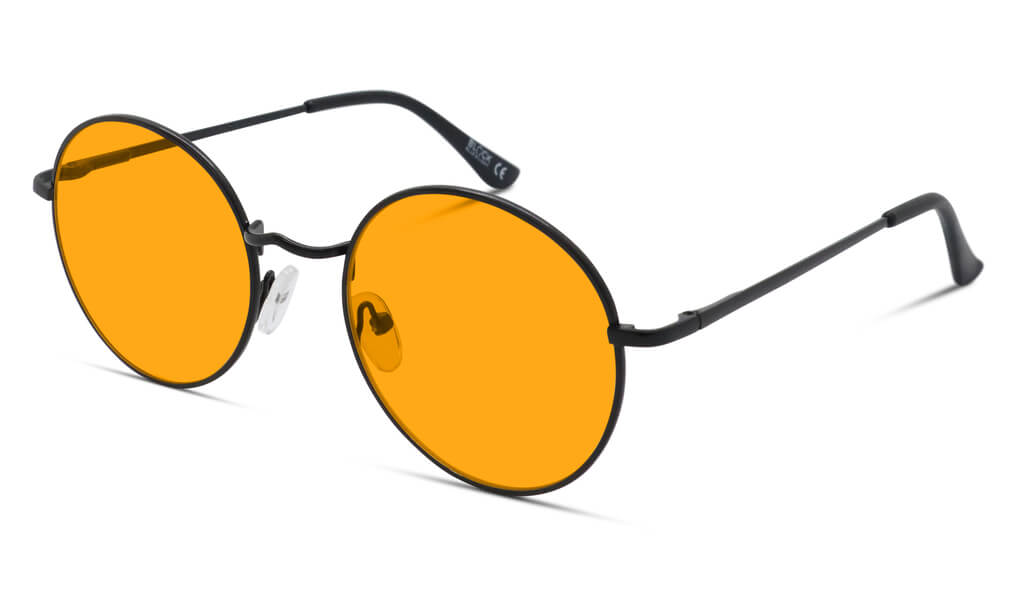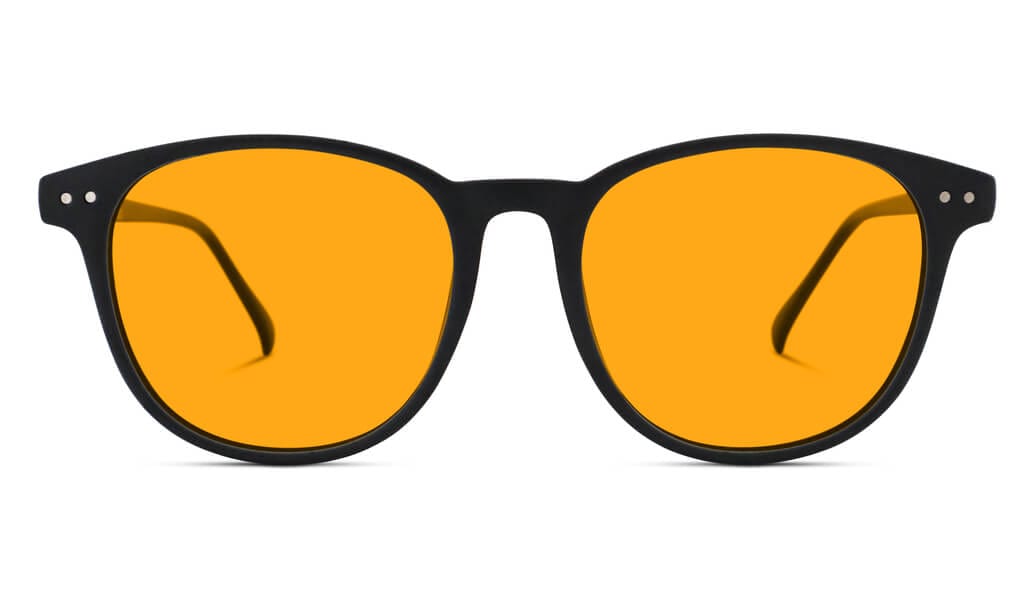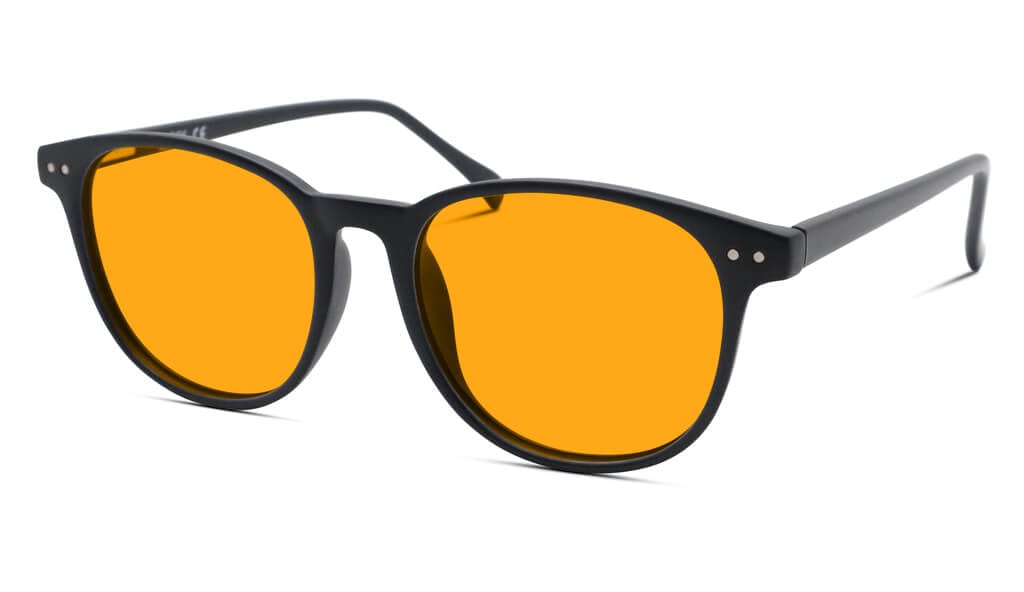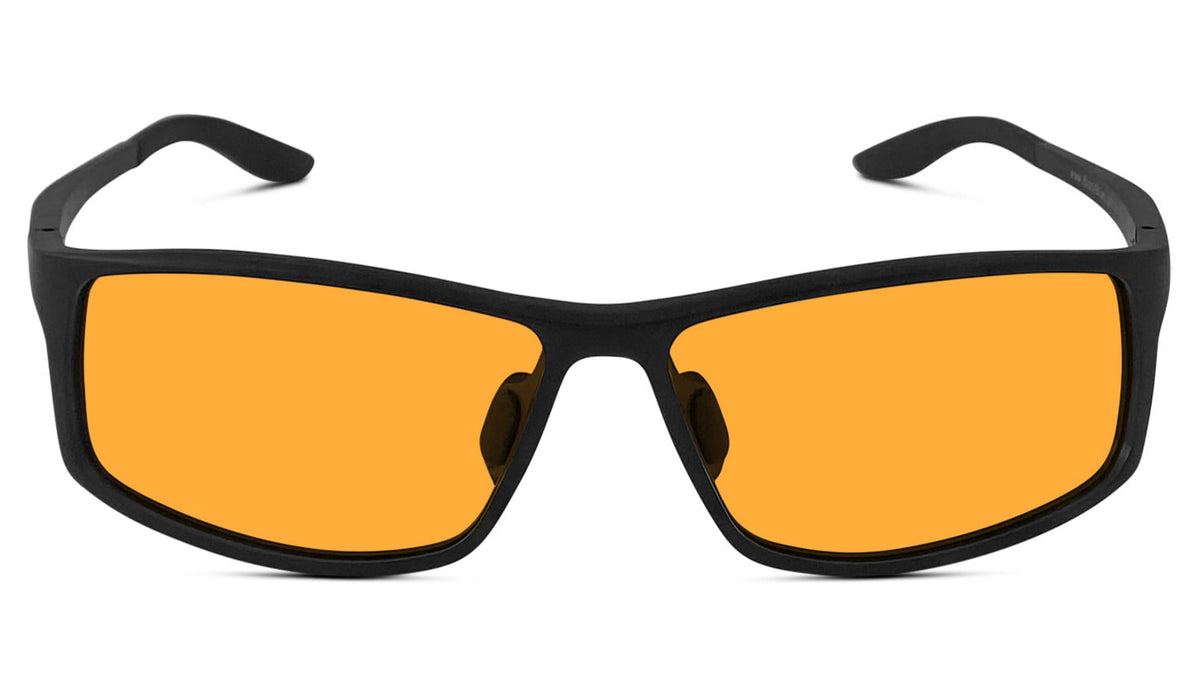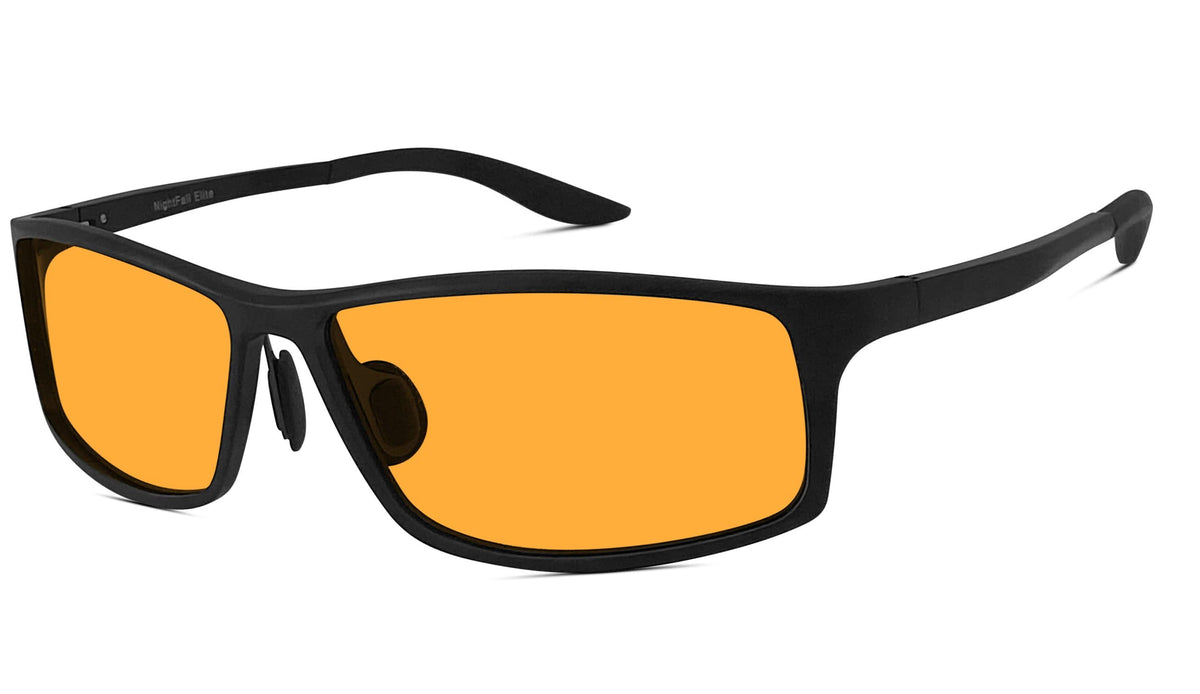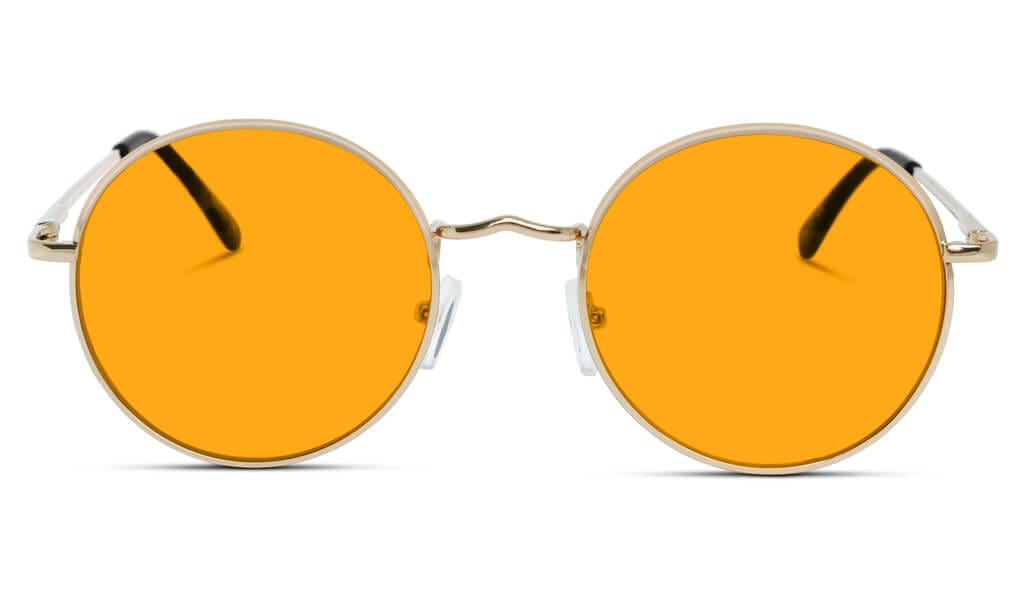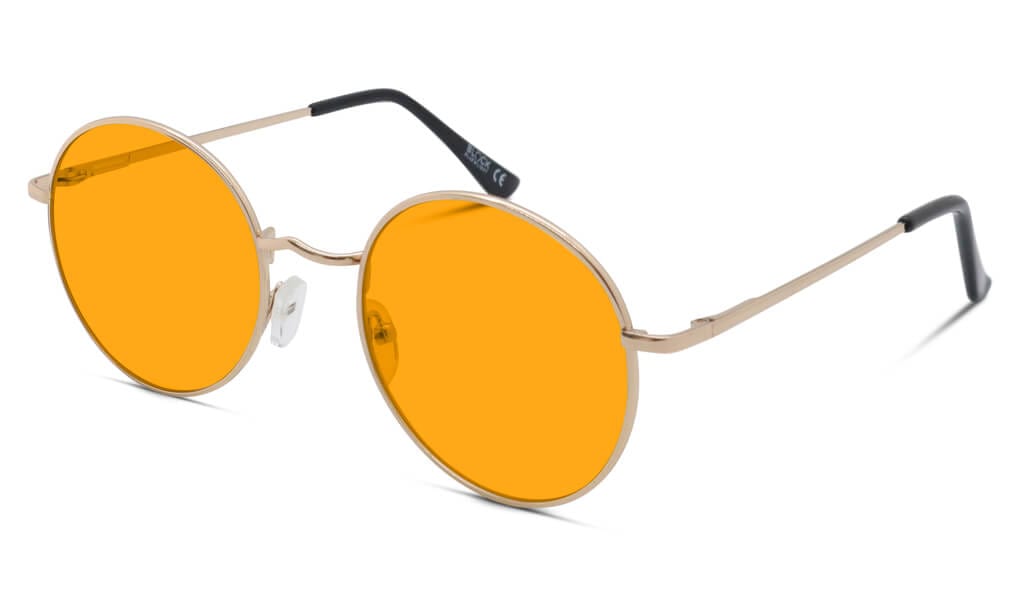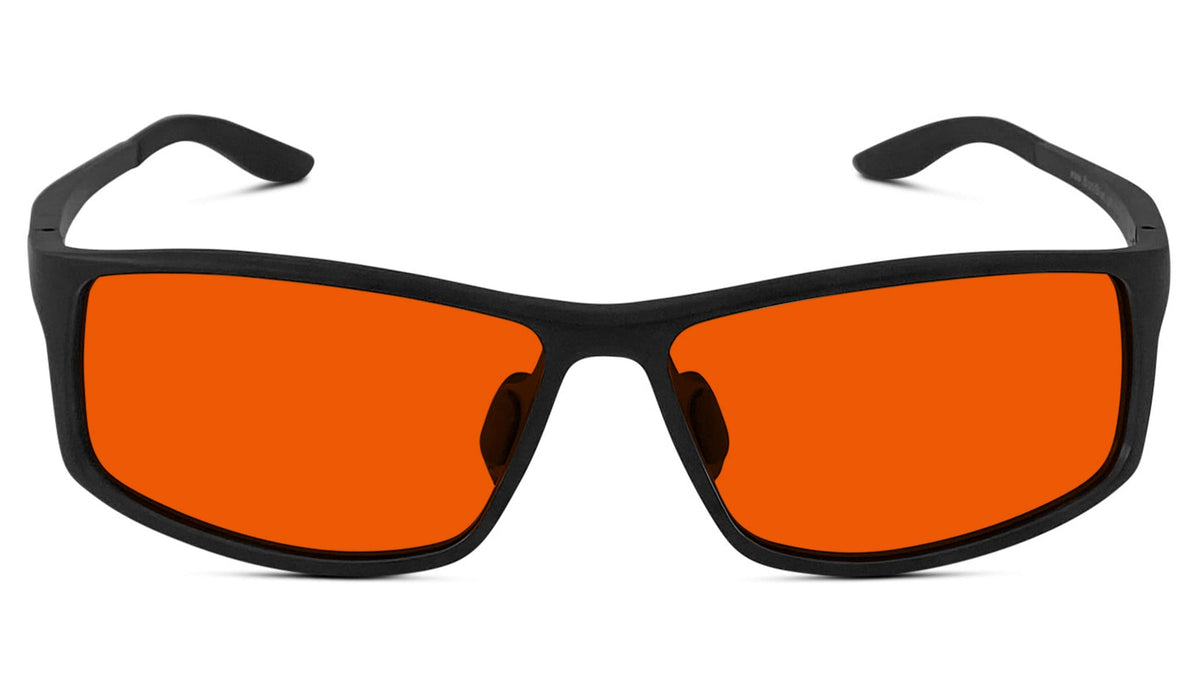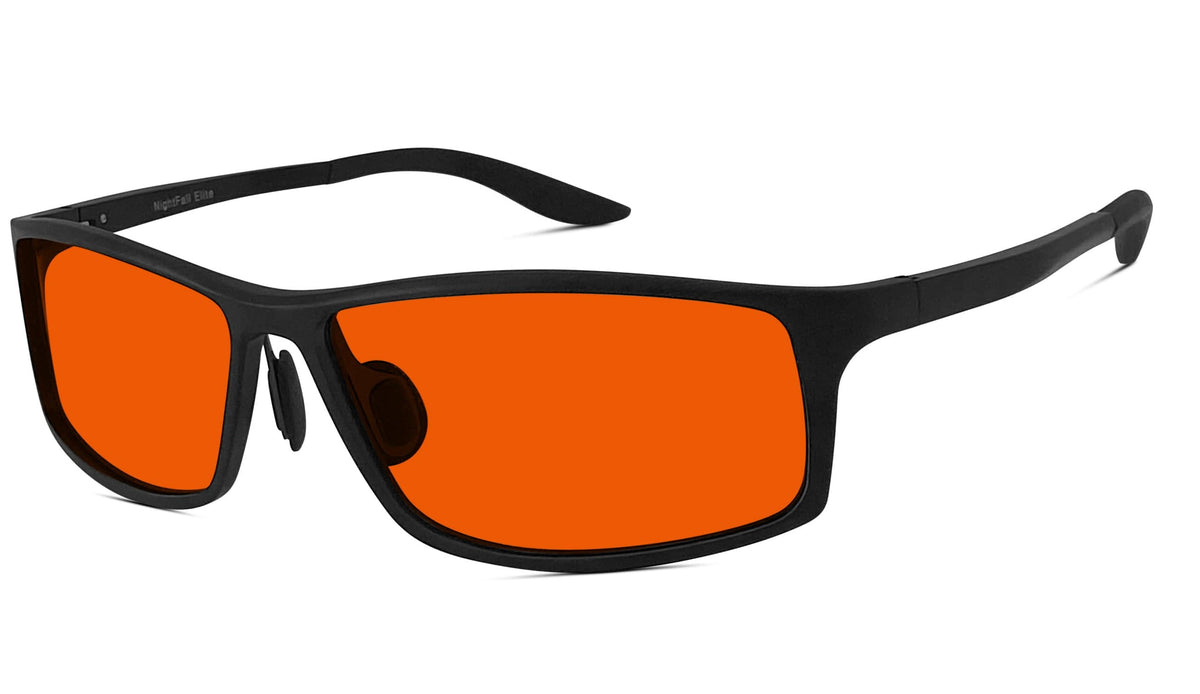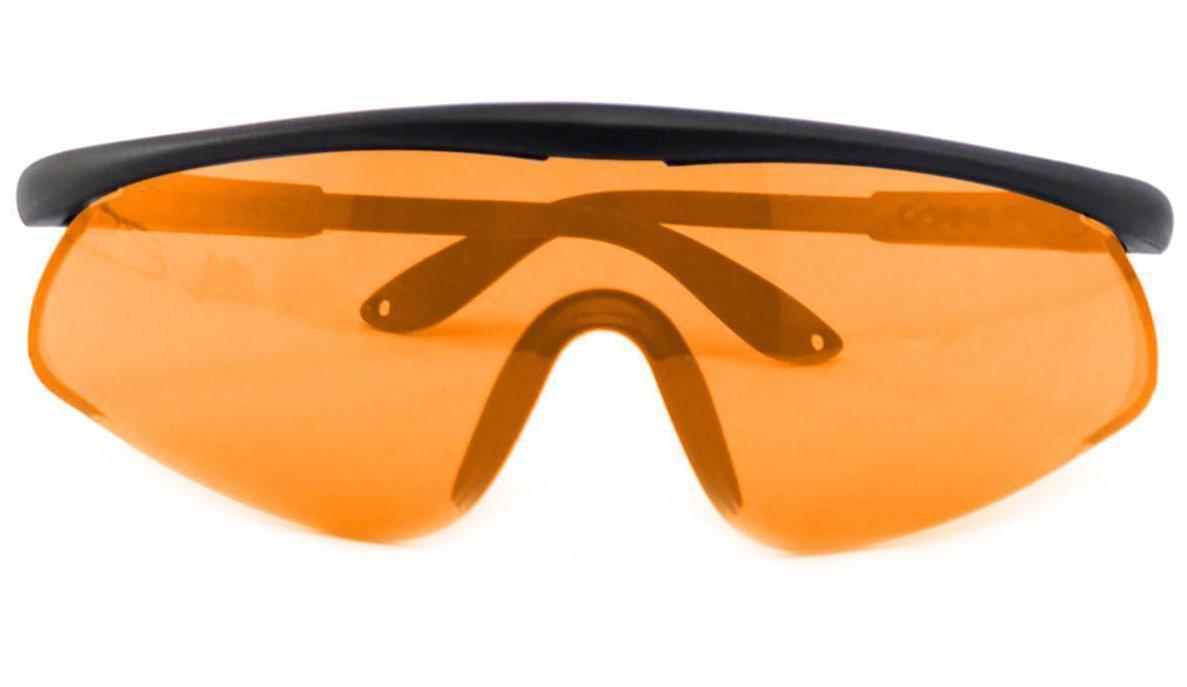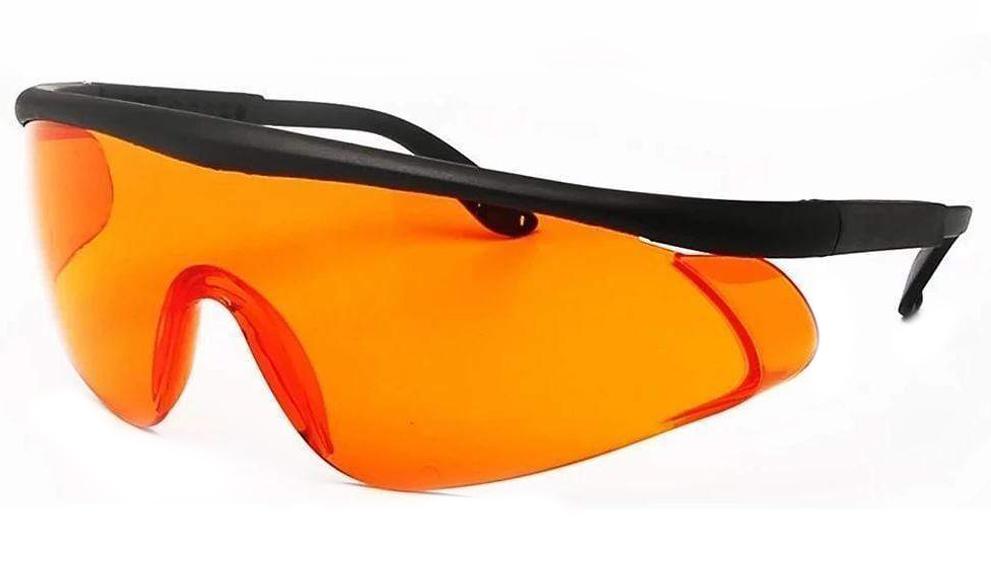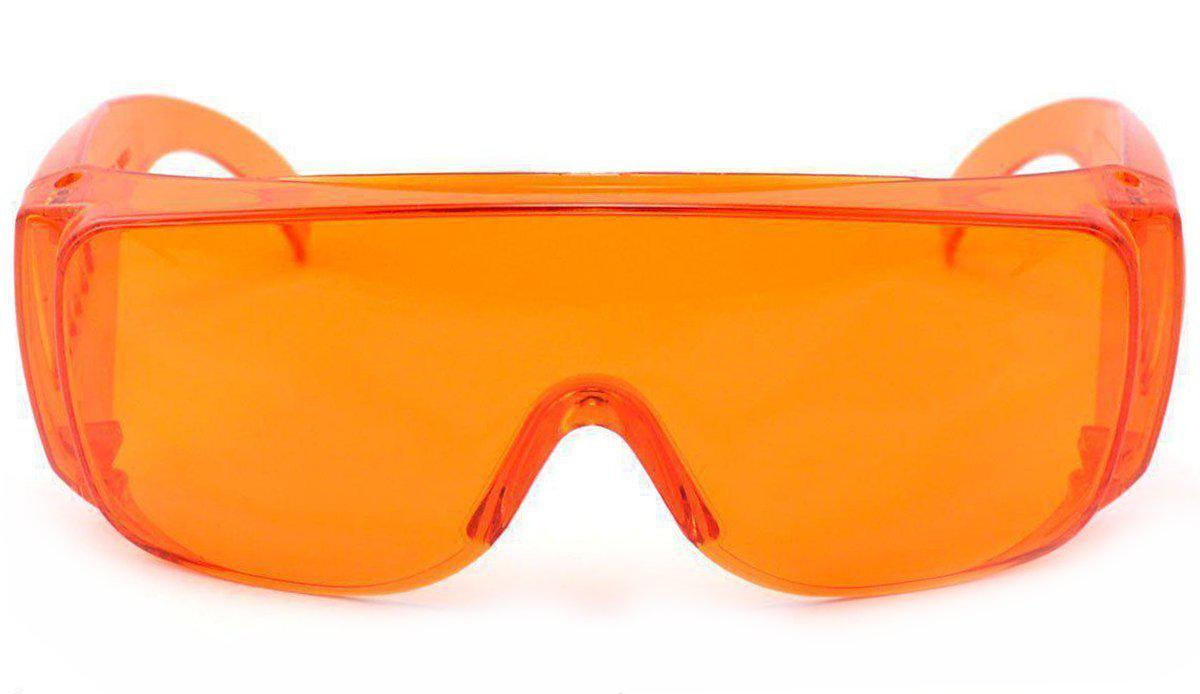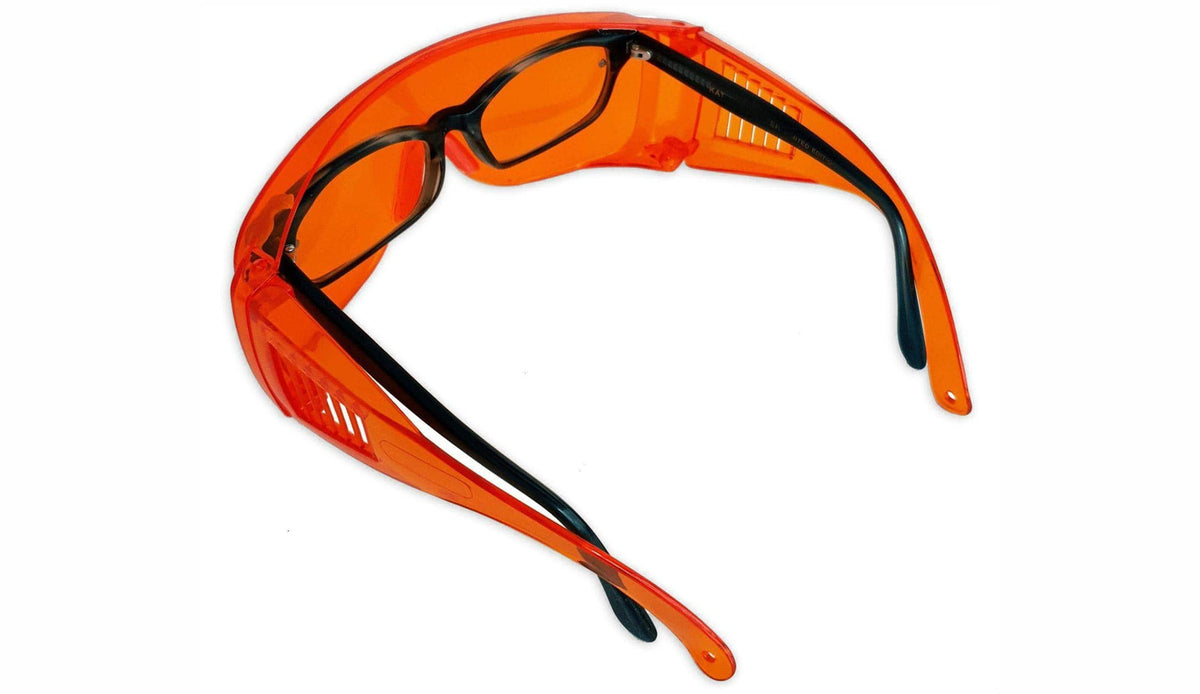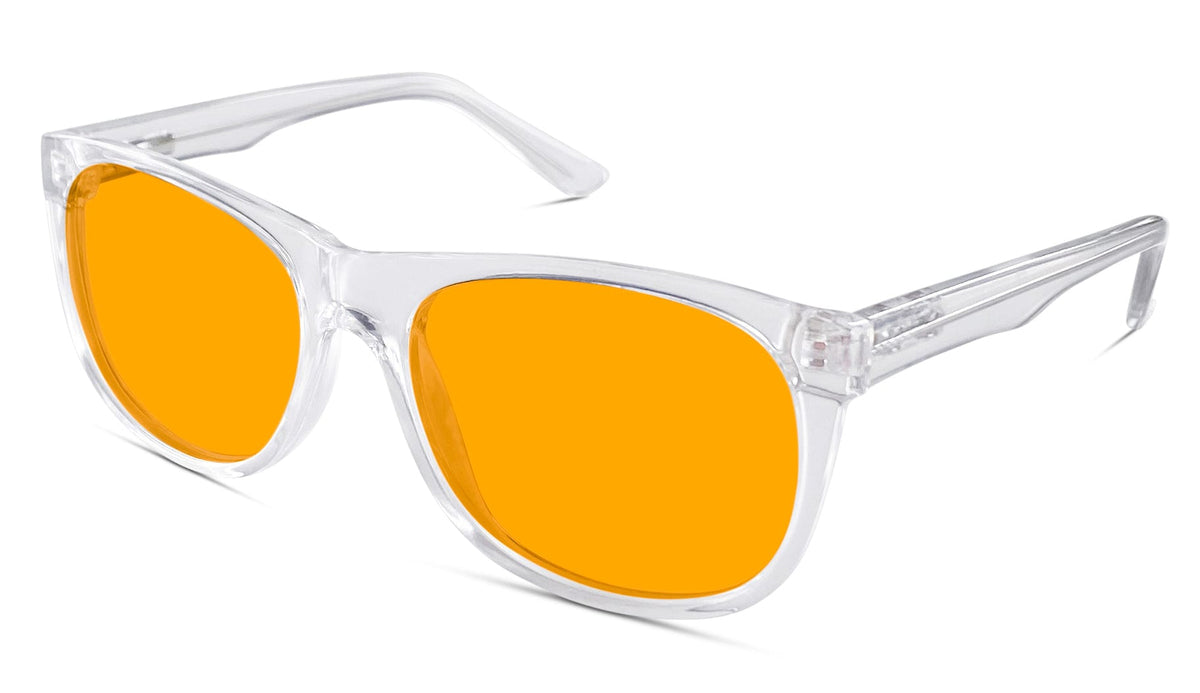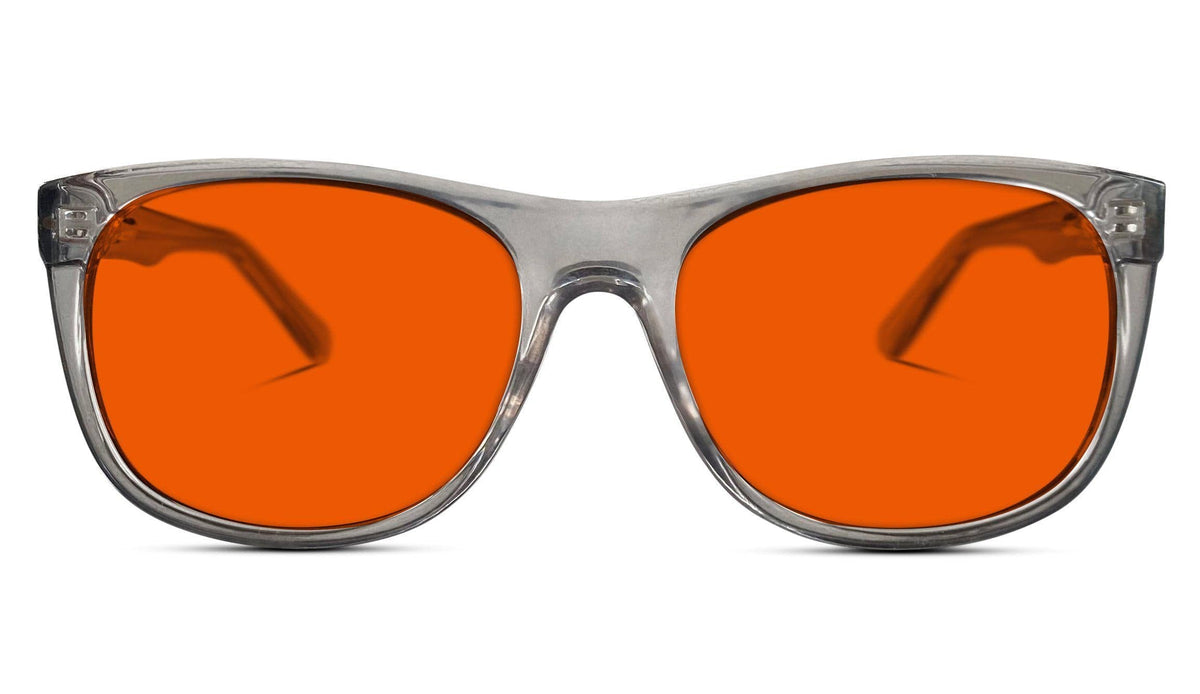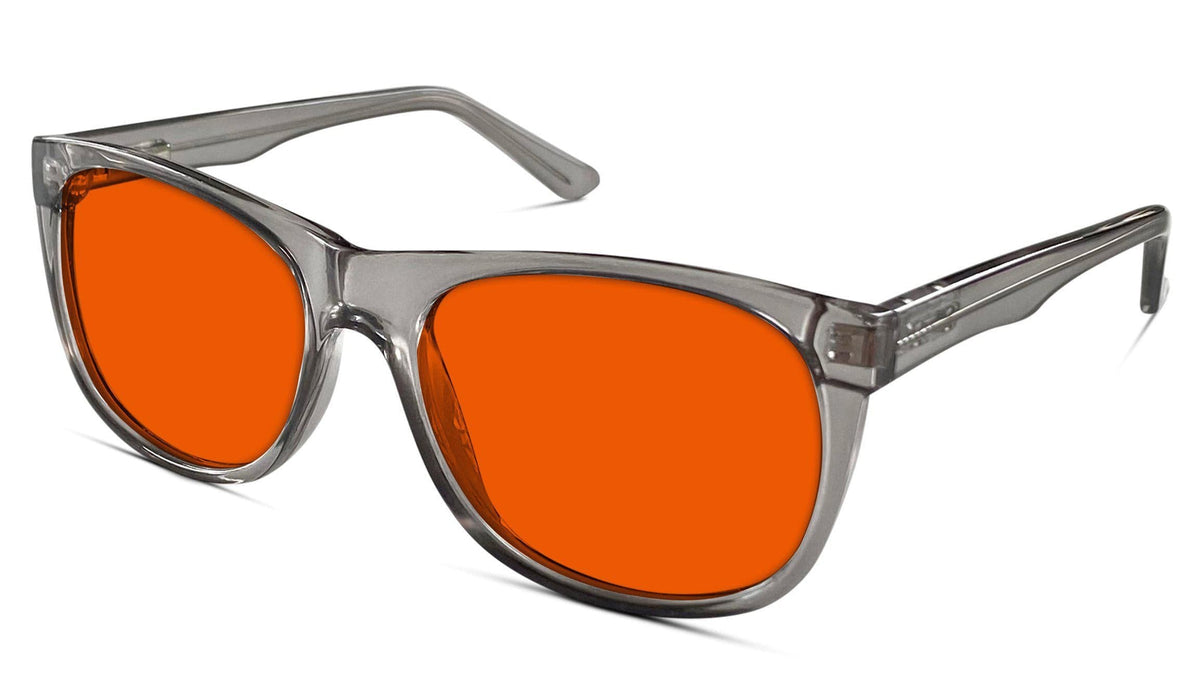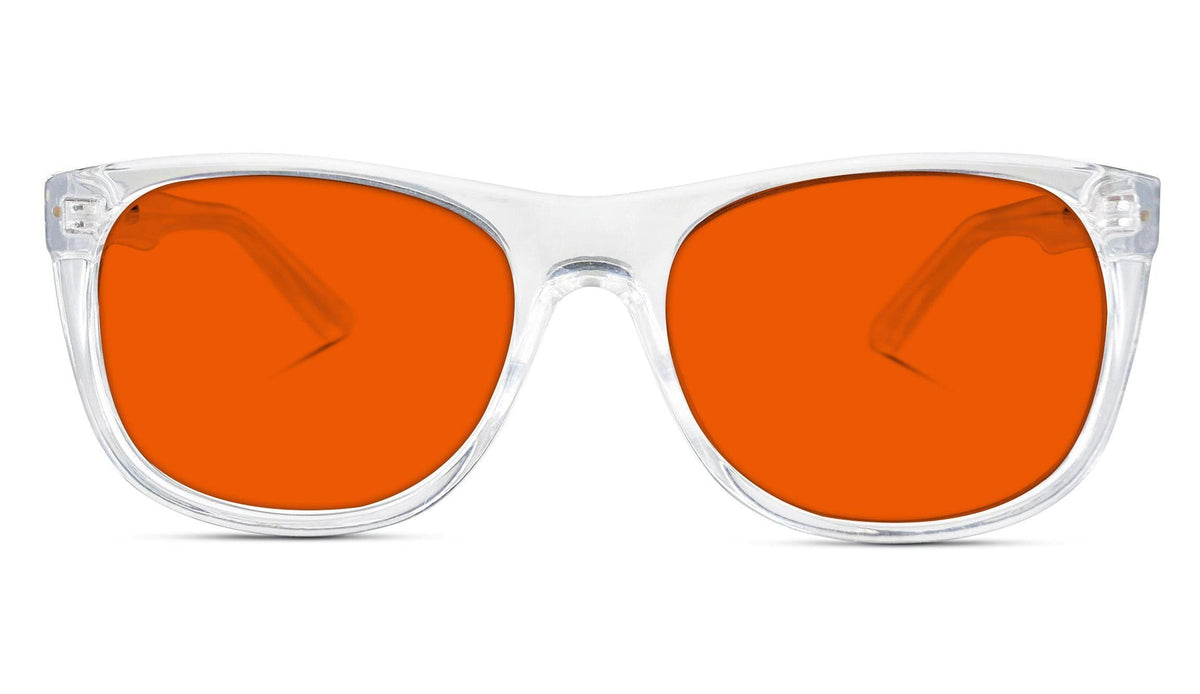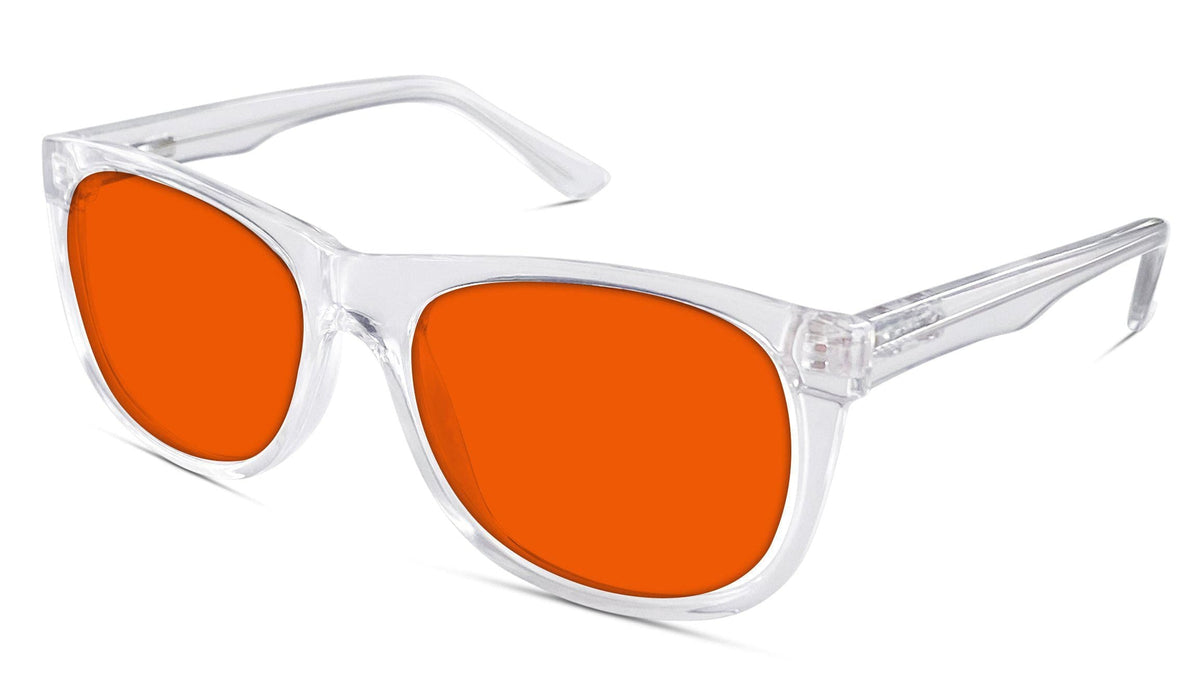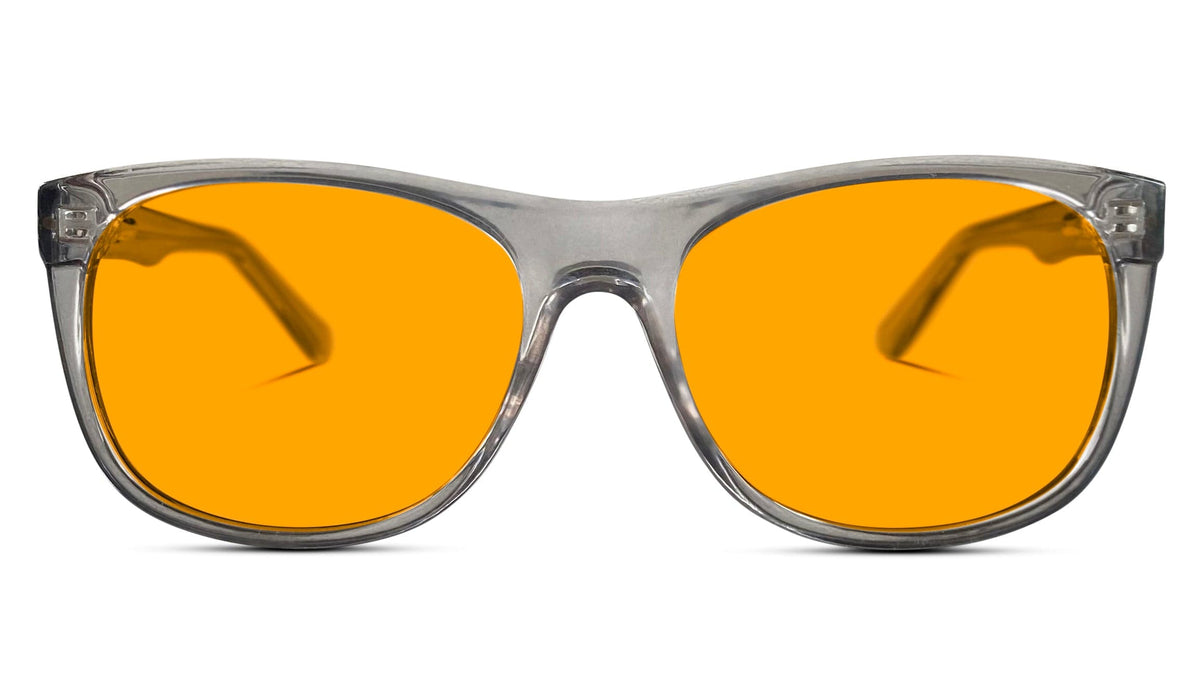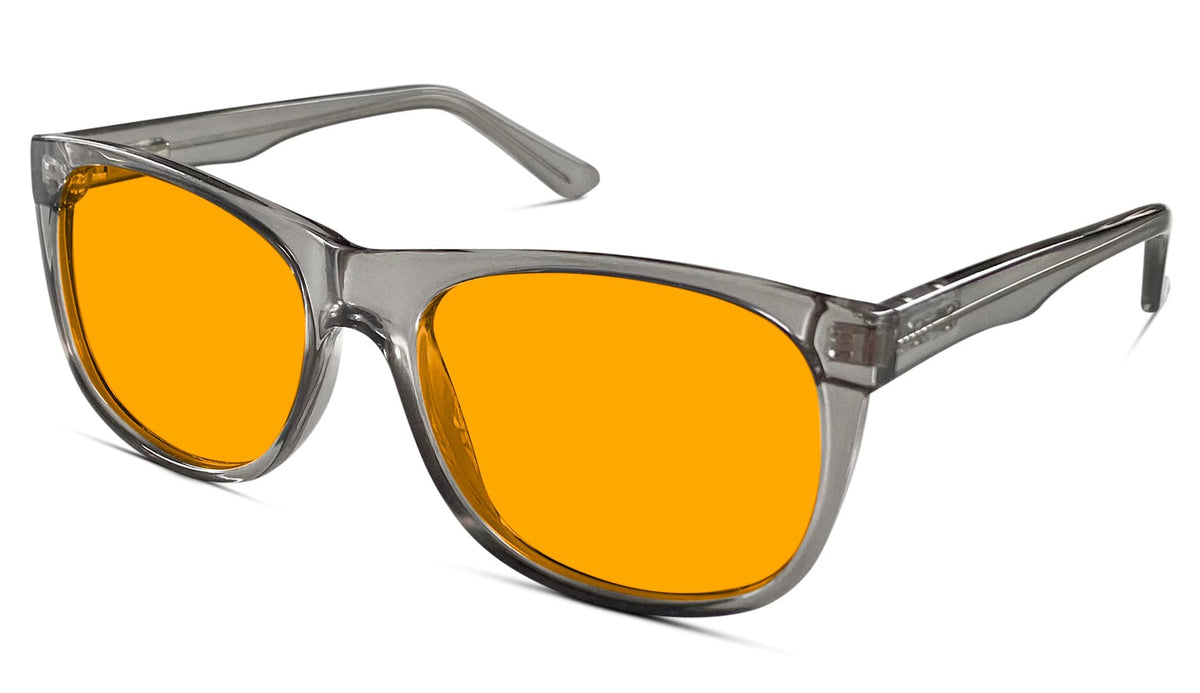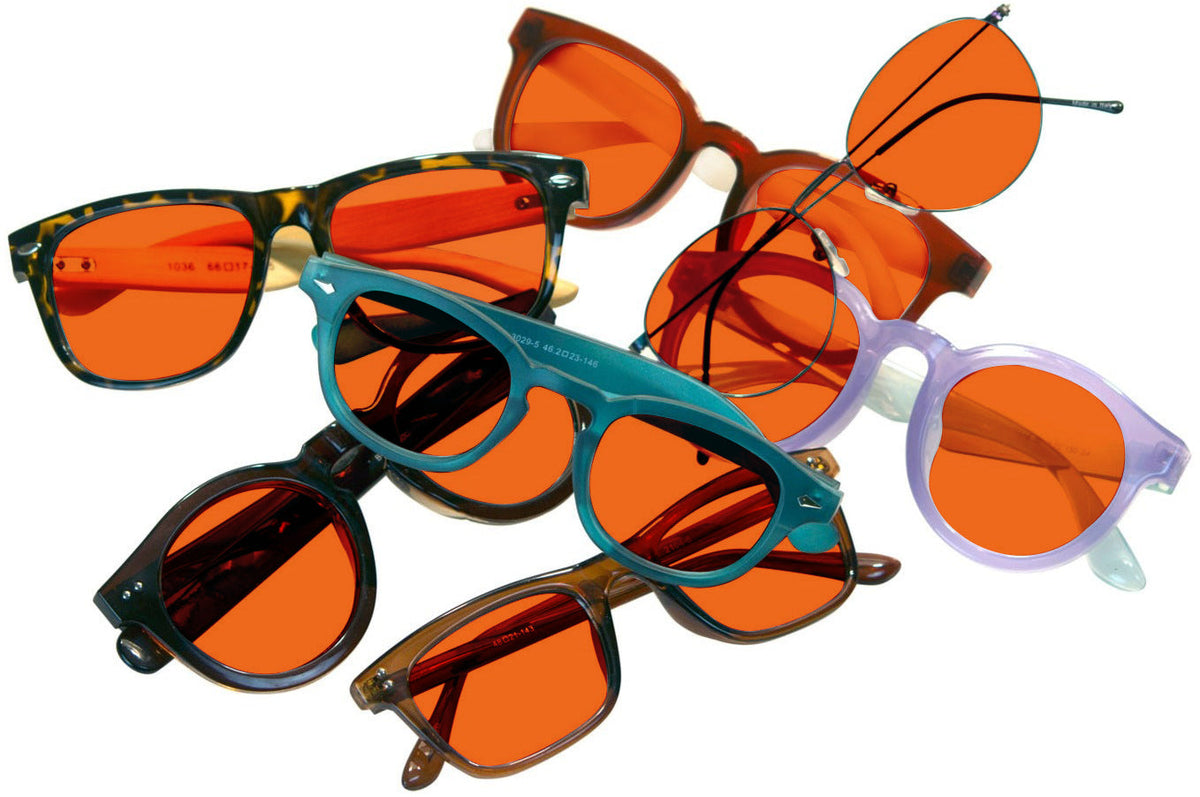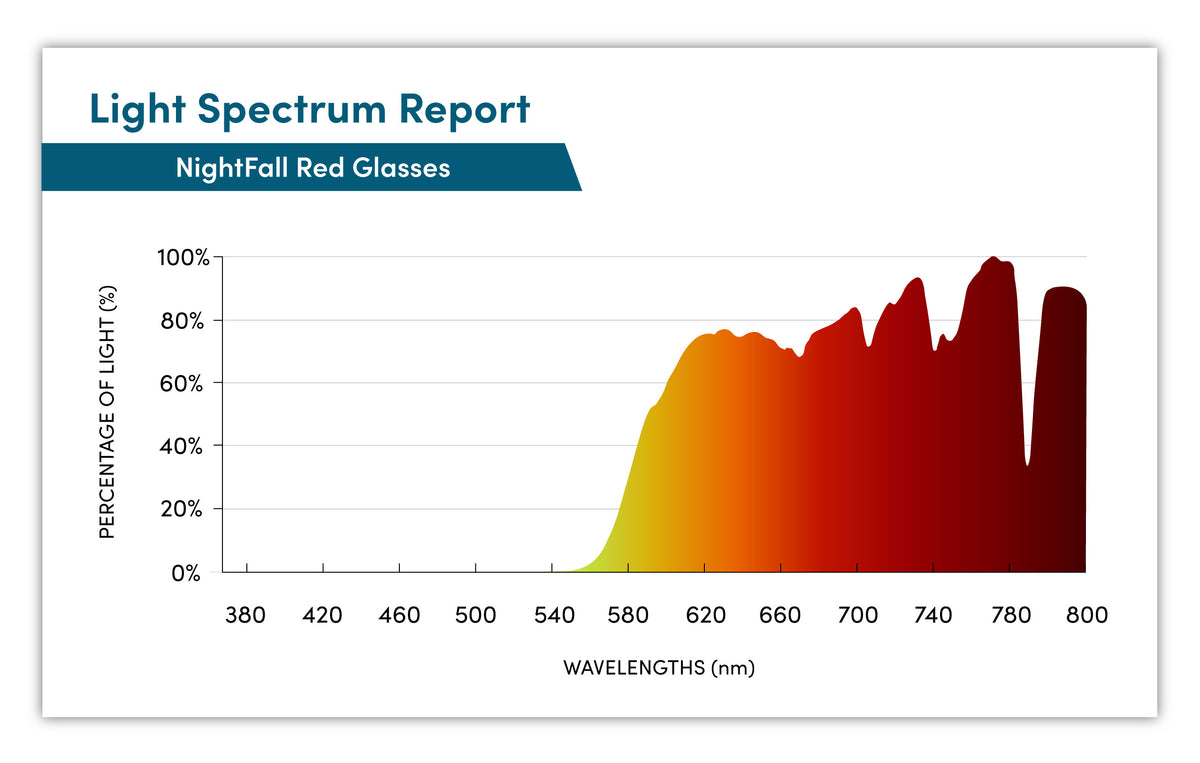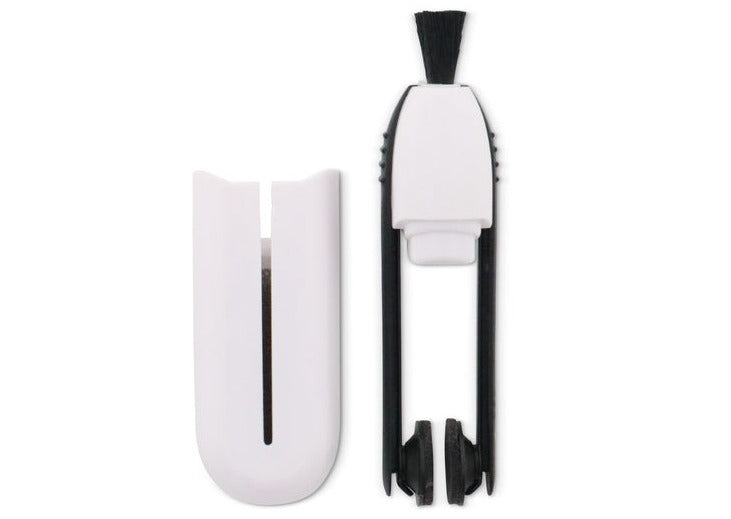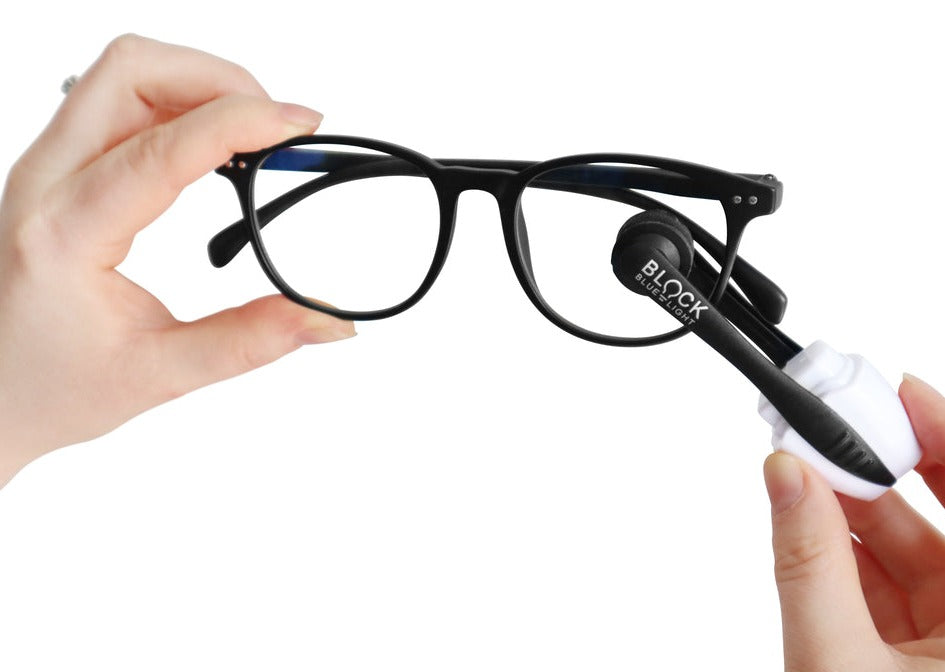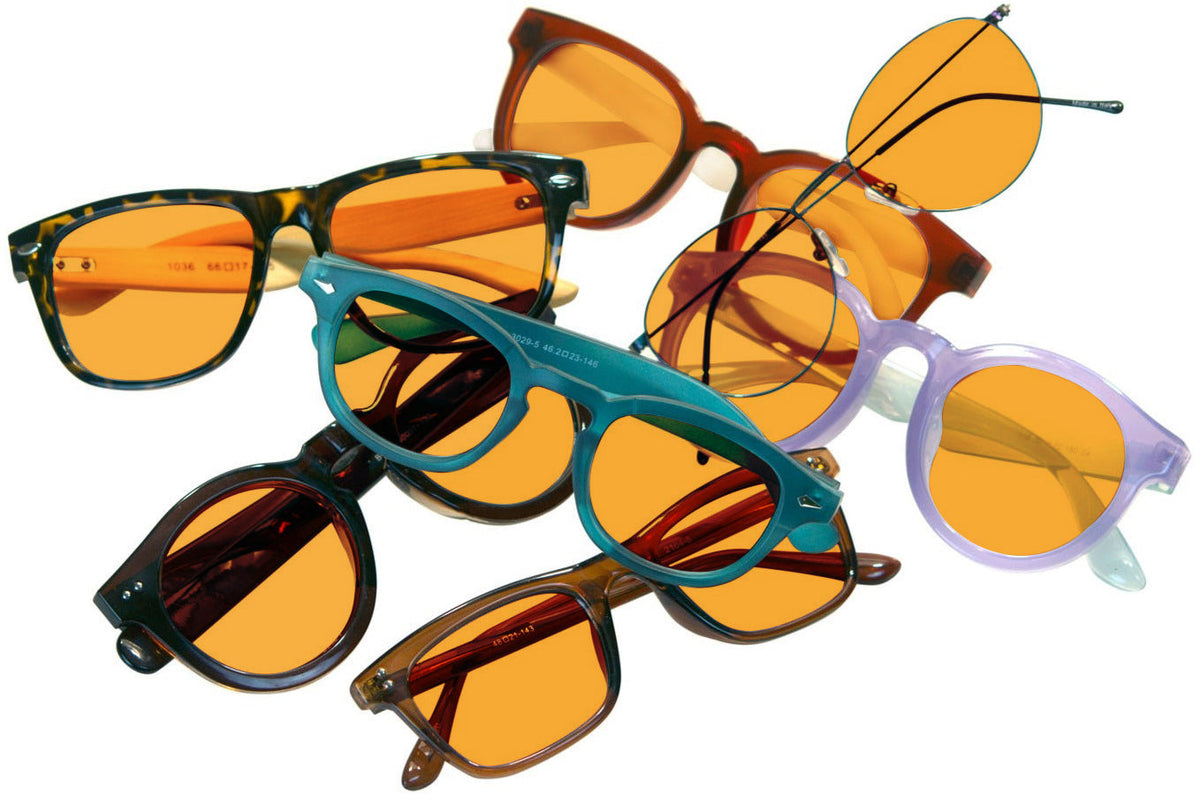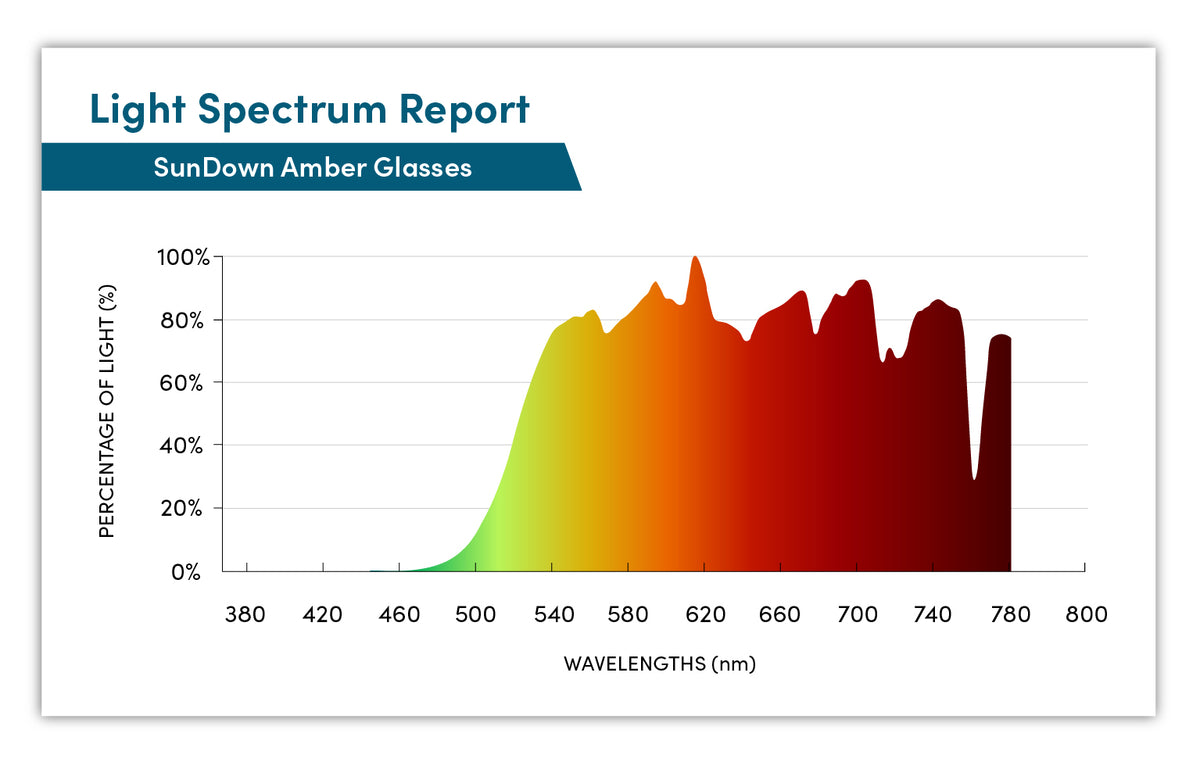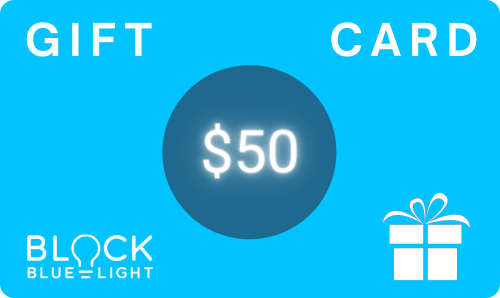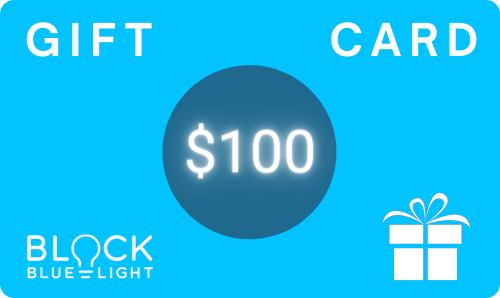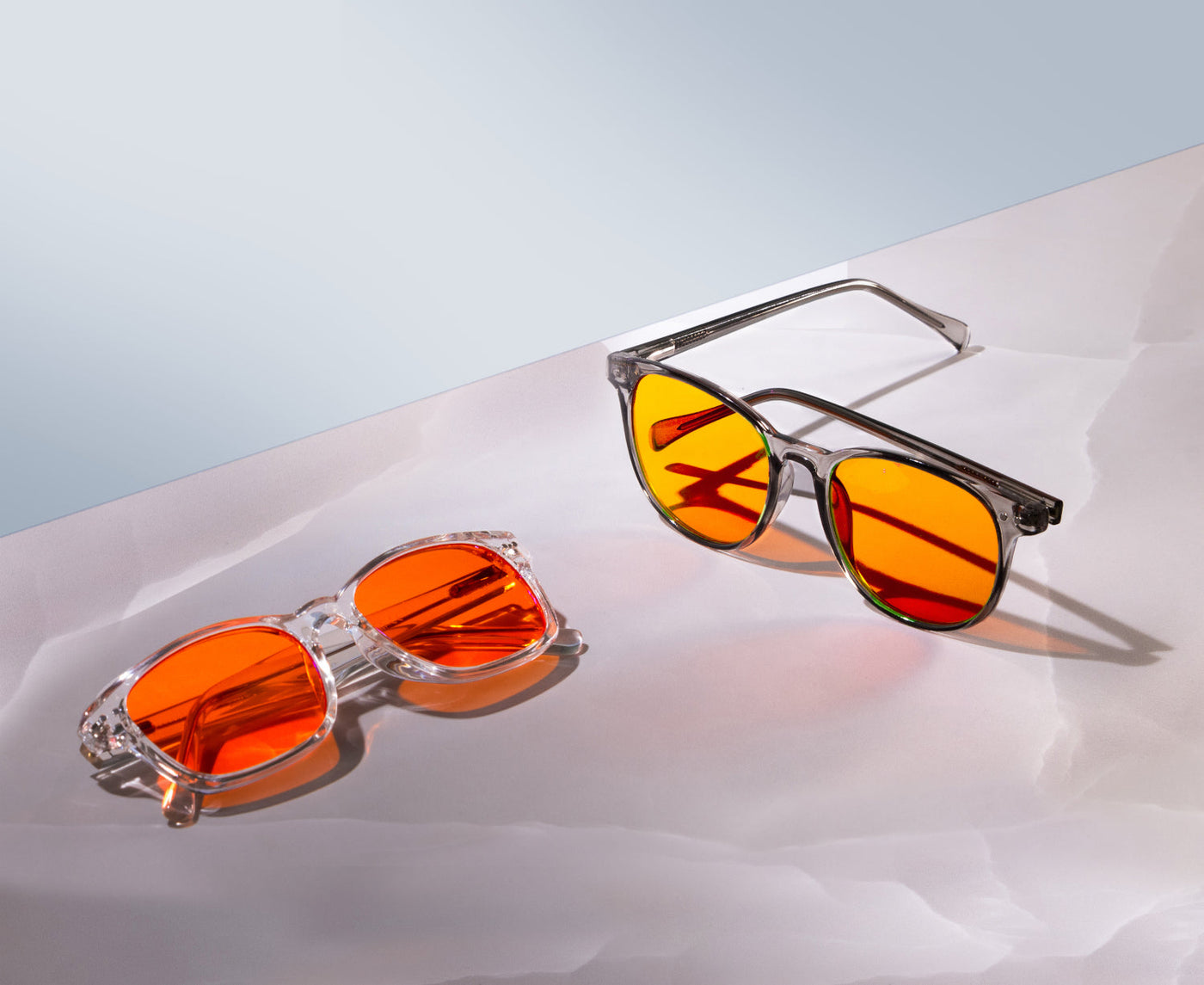
Blue Light Blocking Glasses For Night-time
Evening exposure to blue light sends a “daytime” signal to the brain, which may disrupt the body’s natural preparation for rest. The biggest sources are the devices we use every day — computer screens, smartphones, LED lighting, TVs, and even the light inside the fridge all emit high levels of stimulating blue light.
read moreOnce the sun sets, even small amounts of blue light may interfere with melatonin production, affect your natural wind-down process, and impact circadian rhythms. Our SunDown and NightFall lenses are specially designed for evening and night-time use to help reduce light exposure that may affect sleep and support a more relaxed nighttime environment.
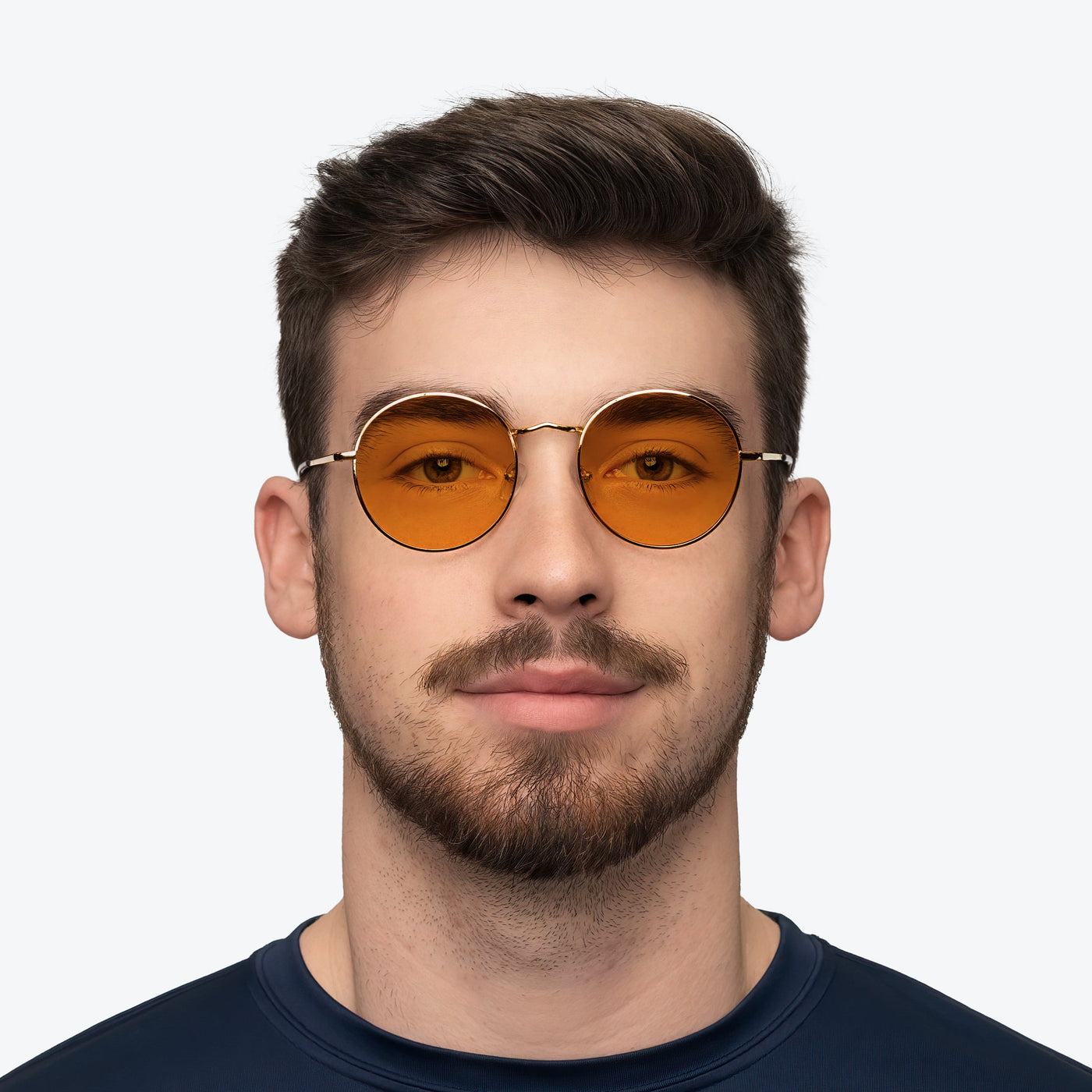
SunDown Blue Blocking Glasses (Amber Lens)

Helps You Unwind

Lighter Amber Lens

Designed to Support Sleep

Blocks 100% Of Blue Light
The SunDown range is designed and verified to block 100% of blue light. Wearing these glasses in the evening may help support natural melatonin production and promote a more restful night’s sleep. They are best worn 2–3 hours before bed as part of a healthy nighttime routine.
The amber lens is ideal for those seeking a premium 100% blue-blocking option with a lighter tint—perfect for maintaining colour perception while minimising stimulating blue light exposure in the evening.
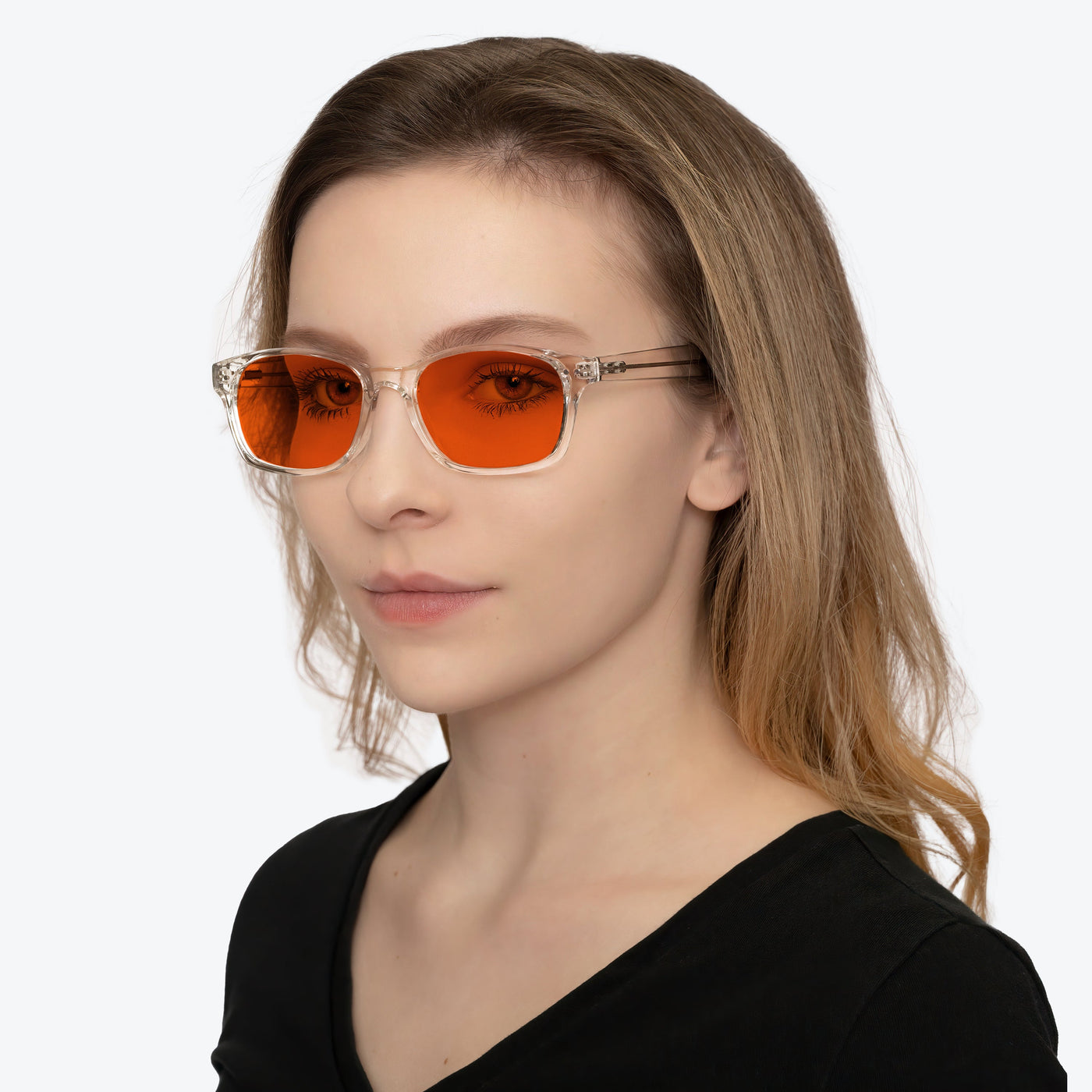
NightFall Blue Blocking Glasses (Red Lens)

Most Optimal Night-time Glasses

Aligns With Academic Studies

Designed to Support Sleep

Blocks Blue & Green Light
The NightFall range is the most powerful and premium lens available. These block 100% of blue light along with 100% of green light up to 550nm. Why green light? Well, green light is right next to blue on the visible light spectrum, and the melatonin disruption zone extends right into the green light spectrum. These glasses provide the most optimal blue (and green) light protection available to maximise sleep quality. The red lens is the best option for people struggling with poor sleep or insomnia, or are looking to maximise sleep quality as much as possible.
FAQs for night-time blue light blocking glasses
BlockBlueLight’s night-time glasses are specifically designed to block 100% of blue and green light wavelengths commonly emitted by electronic devices and artificial lighting. This includes smartphones, laptops, TVs, tablets, and overhead LED or fluorescent lights.
Blue and green light exposure in the evening has been shown in scientific literature to affect natural melatonin rhythms, which play a role in regulating sleep. By reducing your exposure to stimulating light after sunset, our night-time glasses help support your body’s natural ability to wind down and prepare for rest.
Enjoy your devices and screens in the evening while helping to maintain a more relaxed environment that supports healthy sleep patterns and nighttime wellbeing.
NightFall Red Lenses – These lenses are designed to block 100% of blue and green light wavelengths up to 550nm. These wavelengths have been identified in scientific literature as the most influential on the body’s natural light-sensitive processes, particularly in the evening. NightFall lenses are ideal for late-night screen use and indoor lighting, helping to support a more relaxed environment before bed.
Why block green light too? – Studies suggest that green light from modern LEDs and screens may also influence light sensitivity at night. Blocking both blue and green light helps create a low-stimulation visual environment that aligns with your natural evening rhythm.
SunDown Amber Lenses – A perfect option for those wanting premium blue light protection with greater colour perception. These lenses block 100% of blue light while offering a lighter amber tint, making them suitable for early evening use—ideal for activities like cooking, watching TV, or socialising in the hours before bed.
What about clear or yellow lenses? – Clear and yellow lenses are generally suited for daytime or screen-related use. For nighttime environments, it's important to use glasses specifically designed to filter a broader range of stimulating light. Our SunDown and NightFall lenses have been independently verified to block 100% of blue light and are crafted for optimal comfort and evening use.
With so many blue light glasses on the market making different claims, it can be overwhelming to choose the right pair.
At BlockBlueLight, our night-time glasses have been carefully designed using advanced lens technology to reduce exposure to both blue and green light wavelengths, consistent with ranges identified in leading academic research. We’ve engineered our lenses to match key optical targets for evening and night-time use, helping to support a low-stimulation light environment.
Many orange- or red-tinted glasses available today may not be developed with specific wavelength filtering in mind. In some cases, lenses are tinted but not spectrometer-tested to ensure they’re effectively filtering the intended ranges of light. As a result, users may not experience the full benefits associated with evening light management.
Clear lenses that claim to block blue light typically filter only a small percentage—often between 10% and 20%—which may help with screen glare or visual comfort during the day, but may not be suitable for night-time use when broader wavelength blocking is desired.
All BlockBlueLight lenses are tested using lab-grade spectrometers to ensure precise wavelength filtering. You can view our lens testing reports here. We’re committed to delivering high-quality blue light glasses that are backed by data and trusted by thousands worldwide.
Many glasses on the market that claim to block blue light rely on a basic reflective coating and may only filter a small portion of the blue light spectrum—typically between 5% and 15%. These coatings often do not align with the wavelength ranges highlighted in leading academic research on light exposure.
At BlockBlueLight, our blue light lenses are developed using science-led design and manufacturing. Instead of relying solely on surface coatings, we embed a special pigment into the lens itself to absorb targeted wavelengths of blue and green light—up to 550nm. This approach is aligned with findings from published studies exploring the relationship between light exposure and circadian rhythms.
We provide full transparency by publishing spectrometer lens reports under each of our product listings—so you can see exactly how each lens performs across the light spectrum.
In addition to advanced optical technology, our glasses are crafted with premium acetate frames, spring hinges, and CR-39 optical-grade lenses for exceptional clarity and comfort. We're committed to delivering eyewear that combines both function and style.
We recommend wearing our night-time glasses only after sunset. During the day, your body benefits from exposure to healthy levels of natural blue light, which plays a key role in helping you feel alert and focused.
Wearing night-time glasses during the day can interfere with these natural light cues by blocking too much blue light when your body still expects it. This may result in a feeling of drowsiness or a mismatch with your natural circadian rhythm.
That’s why we offer two distinct lens types:
ScreenTime Clear Lens: Filters ~50% of blue light at 455nm, ideal for general daytime screen use.
DayMax Yellow Lens: Blocks 100% of blue light at 455nm, offering more complete daytime protection for those with high screen exposure or light sensitivity.
Our lenses are engineered to reduce overexposure to intense blue light emitted from LEDs, screens, and modern lighting, while still allowing the beneficial wavelengths that support energy and focus to pass through.
After sunset, our night-time glasses are designed to block 100% of blue and green light up to 550nm, helping support your natural wind-down process for rest and recovery. For best results, we suggest wearing them 2–3 hours before bedtime.
When choosing daytime or night-time glasses, always check the lens specifications to ensure you’re targeting the right wavelengths for your needs.
Once the sun sets and you’re exposed to artificial light from indoor sources, we recommend wearing our night-time blue light glasses.
For best results, keep the glasses on from sunset until bedtime. This helps your body wind down in alignment with natural evening light cues.
Wearing night-time glasses in the evening helps support your natural sleep-wake rhythm by limiting exposure to blue and green light—wavelengths which may disrupt evening relaxation and sleep preparation for some individuals.
Many users find that consistent use in the evening helps them feel more relaxed and ready for sleep.
Yes, we have our complete glasses range available in prescription glasses and readers glasses. We can make any custom prescription including progressive/varifocal lenses. On each glasses product page, there is a selector to choose prescription glasses, you then choose if you want single vision or progressive/multifocal lenses and whether you would like standard lenses or thin and light lenses. There is then a place for you to upload your script as well. Then checkout and place your order. From here our optics lab will take care of the rest getting you custom prescription glasses made for you.
Alternatively we have created our fit-over range of daytime blue light computer glasses which have been specifically designed for this reason. This allows you to put our lightweight fit-over glasses over the top of your glasses to provide you with the best blue light protection. You can continue to wear your existing reading or prescription glasses, and our fit-over glasses will nicely fit over them and provide maximum protection against blue light.

